





A map that shows the location of the proposed Wildcat Regional Park in the Highlands Ranch area.







A map that shows the location of the proposed Wildcat Regional Park in the Highlands Ranch area.
Neighbors in Highlands Ranch area pushed back against original proposal, citing
BY ELLIS ARNOLD EARNOLD@COLORADOCOMMUNITYMEDIA.COM
A plan for a large park in the Highlands Ranch area with sports elds — a possibility that’s feared by some residents amid concerns about possible impacts to wildlife — could end up scrapped in favor of a plan to e ectively create open space on the land.
“It’s nice to see this in black
and white and no soccer elds, no rec centers or regional active-use proposals,” said Kathie Shandro, a member of the Douglas County Open Space Advisory Committee.
For months last year in Douglas County, parks and recreation plans drew the spotlight. e youth sports community raised their voices of concern about the future of elds in the Castle Rock area amid plans
to renovate the county’s Fairgrounds Regional Park. County leaders have expressed desire to locate new sports elds elsewhere. But a proposal to add sports elds in the Highlands Ranch area — at what’s known as the Wildcat Regional Park land — met opposition, including an online petition that worried about the possible e ect on wildlife. Eventually, the open space
Districts seek to balance legal compliance with the needs of students
BY SUZIE GLASSMAN AND CCM STAFF REPORTERS SGLASSMAN@COLORADOCOMMUNITYMEDIA.COM
As federal immigration policies evolve and schools are no longer o limits for immigration enforcement operations, districts across the Denver metro area are facing di cult questions about how to respond if Immigration and Customs Enforcement agents arrive on campus.
As a result, Colorado Community Media reporters reached out to the school districts in our coverage area to ask how they’re addressing these concerns with their sta and the communities they serve.
is is the response from the Douglas County School District. To read the full story that includes all of the metro area’s school districts, visit the Douglas County News Press online.

plan could win out over the proposal to add sports elds in that spot.
Shandro’s comments came during a meeting where the committee heard from area residents who spoke in favor of the plan to maintain the land as essentially open space. Some committee members also spoke in favor of that proposal.




BY HALEY LENA HLENA@COLORADOCOMMUNITYMEDIA.COM
As the FBI continues to monitor the rise of human tra cking in Colorado, particularly cases involving youth, various agencies and organizations across the state are working to combat the crime.
But one sector is on the front lines.
“I think healthcare workers come across human tra cking victims more than any of us,” said Janelle Goodrich, founder and executive director of From Silenced to Saved, a nonpro t organization that supports victims of sexual exploitation.
Research, including studies published in the National Institute of Health, shows that more than 60% of those being trafcked had visited an emergency room while being exploited. at reality was brought to Mary Marnell’s attention during the COVID-19 pandemic while working in the emergency department at the Medical Center of Aurora.
While working outside alongside a coworker, two young girls approached them. After they walked away, Marnell’s coworker told her that those two girls were likely being tra cked — sparking Marnell to want to learn more about human tra cking in the area.
When Marnell began working as an emergency room nurse at AdventHealth Parker shortly after, she wanted to bring more awareness to human tra cking, but noticed there weren’t a lot of resources that were easily accessible.
“ e sheer number of people that are seen by healthcare sta members — and that’s including registration, EMTs, not just nursing — aren’t o ered resources,” Marnell said. rough training with Goodrich with From Silenced to Saved in Castle Rock, Marnell learned that the amount of knowledge that her sta didn’t know about human tra cking was huge.
Whether it’s the dentist, an OBGYN or an emergency room nurse, the average victim is seen in a healthcare setting about nine times before they are discovered or disclosed, said Goodrich, adding that sometimes the emergency room or an urgent care serves as their primary care.
To further train emergency room nurses on how to identify and support potential victims, AdventHealth Parker has teamed up with From Silenced to Saved.
From Silenced to Saved
For about a decade, Goodrich, a certied family trauma professional, has focused on victims and survivors of human tra cking, sexual exploitation and other related violent sex crimes. Six years ago, she founded From Silenced to Saved. e nonpro t is a third-party case management organization that provides assistance to government agencies in domestic sex-tra cking investigations. Additionally, it’s the only non-governmental agency currently approved to respond on scene alongside local, state and federal law enforcement in Colorado.
“We are referred and brought in by law enforcement only,” said Goodrich. “(We) start from recovery all the way through the case with the named victim, and help them kind of weave through the court
process and make sure that they’re getting all their needs met.”
Goodrich, who also serves on the Colorado Human Tra cking Council, works with community partners to help bridge the gap with law enforcement to provide needed services to victims.
“A majority of victims are not disclosed, they are discovered,” said Goodrich. “You show up to what’s happening to them.”
Disclosed means to make information known while discovered means to nd something previously unknown.
Having helped nearly 300 victims and survivors since its inception, From Silenced to Saved provides trauma informed mentorship, and helps fund housing, food and transportation for victims. Goodrich also attends court appearances and trial preparation sessions. e organization also partners with FBI Denver’s Child Exploitation and Human Tra cking Task Force, which includes sheri ’s o ces across the metro area. Since the task force formed in 2012, it has recovered nearly 700 minors.
Recognizing human tra cking
Human tra cking is not blurred by gender or any type of sexual identi cation, and is a crime that hides in plain sight, Goodrich said.
“Any type of vulnerability that’s compounding, such as poverty, homelessness … just adds to that vulnerability for them to be tra cked,” Goodrich said.
She said if nurses could learn only one thing from the training, it would be that the movies aren’t reality — that human tra cking victims might look like every other person who walks into the hospital.
And, if it’s a minor, it’s a mandatory child abuse report.
Nurses learn about what needs to be reported, as well as how and when. e nurses are given tools to help identify youth who are at high risk for commercial sexual exploitation and what necessities emergency departments should have.
Another important topic is what to say versus what not to say to potential victims, Goodrich said. One example of what not to say is “why don’t you just leave?,” she added.
ere are many situations, often complicated, for which those being tra cked stay. It could be because of a concern for their safety, manipulation and more, Goodrich said.
Understanding that not every victim is ready to make a report during a visit to a healthcare professional, Goodrich emphasized the importance for nurses to take detailed notes, photographs, encourage the preservation of evidence and provide them with useful resources.
“ ose types of pieces of evidence that can be preserved for minor and adult cases to make sure that a case can move forward and that law enforcement ocers and district attorneys can do their job,” Goodrich said.
During the training with AdventHealth Parker, one nurse brought up the fact that there is a blurred line between what nurses can and cannot do, and felt that they were not properly trained on human tra cking before meeting Goodrich.
“In nursing school and hospital onboarding education, they give you just the tip of the iceberg with ‘this is what mandatory reporting is, this is not necessarily mandatory reporting,’” Marnell said.
To learn more about From Silenced to Save, visit fsts.org.


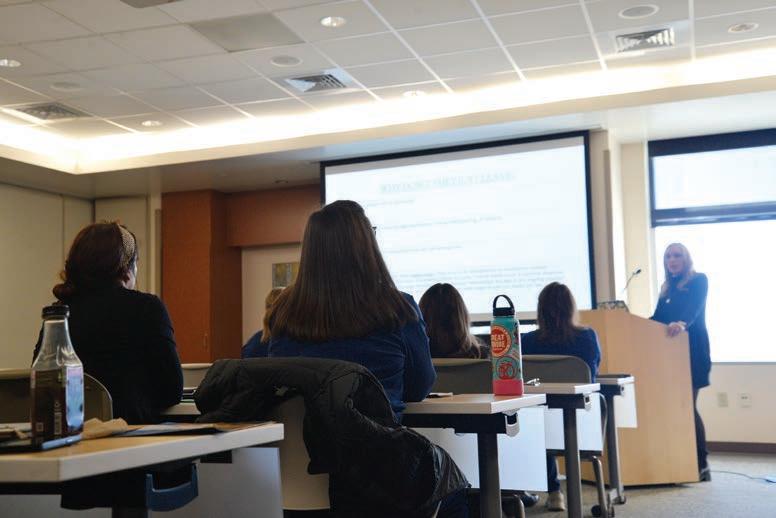


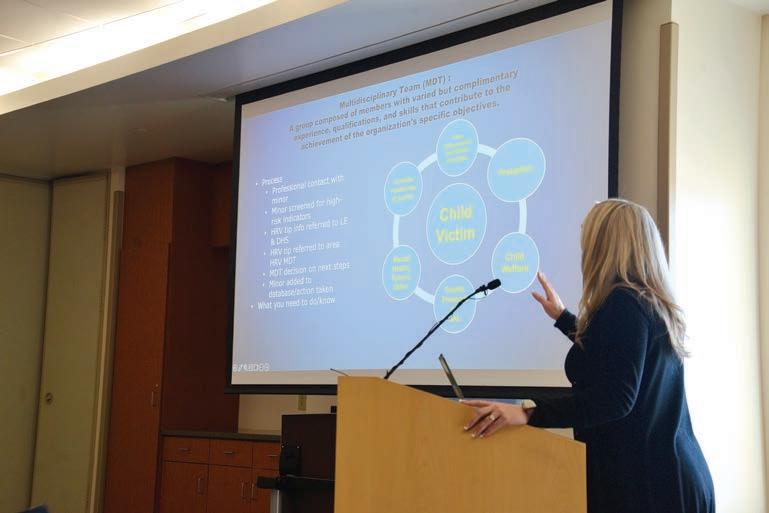




e FBI de nes human tra cking as the illegal exploitation of people. ere are three main kinds of human tra cking listed on the FBI’s website. ey are:
• Sex tra cking, which is when a person is compelled by force, fraud or coercion to engage in commercial sex acts.
• Labor tra cking, which is when a person is compelled by force, threats or fraud to perform labor or service.
• Domestic servitude is when a person within a household appears to be a nanny, housekeeper or other type of domestic worker, but they are being controlled and exploited.
For cases involving minors, it is not necessary to prove force, fraud or coercion, states the FBI’s website.
In the U.S., both residents and foreign nationals are bought and sold in cities, suburbs and rural areas.
According to the latest Common Sense Institute Colorado report, Colorado had the 10th highest overall number of human tra cking incidents nationwide in

2023.



While some might think that human tra cking primarily results from being kidnapped or the use of physical force, many tra cking situations result from psychological means and threats. For example, tra ckers may convince their victims that they are in love with them, or make them dependent on their trafcker for basic needs.
Human tra cking di ers from human smuggling as tra cking does not require any movement and victims can be tra cked within their town. e average entry age into human tra cking is 12-14 years old, according to the National Human Tra cking Hotline’s 2021 polaris review. is entry age is why local law enforcement encourages parents to monitor their children’s phones and social media, as sextortion and child exploitation can lead to human tra cking.

You can report tips to the Colorado Human Tra cking Hotline to 1-866455-5075.

There’s excitement building about the possibility of the Sundance Film Festival coming to Boulder, but we already have a nationally renowned environmental film festival that takes place every February right here in Golden.
The Colorado Environmental Film Festival (CEFF) is a juried film festival that lives up to its name, bringing all kinds of film — long-form, shorts, children’s films, and animated films — for a weekend run that includes awards, filmmaker Q&As, and more.
I recommend the All Access pass for $99, because it not only includes entry to all screenings but also includes streaming access for most of the films for seven days after the festival. Buy it at https://ceff.net/tickets. There are three screening rooms at the Green Center on the Colorado School of Mines campus, so that’s the only way to see your favorite films which might be scheduled simultaneously. Go to https://ceff2025.eventive.org/films for a complete list of the films.
Denver which manufactured the plutonium triggers for thousands of nuclear weapons.
As an aside, one of our broker associates, Kathy Jonke, was an environmental geophysicist for the contractor working onsite at Rocky Flats during the cleanup. She recommended this film before I saw it was on CEFF’s schedule. Ask her sometime about her work.
are family-friendly and free. Bring the kids!

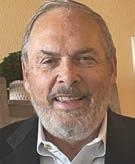
Opening night is Friday the 21st at 7:00 in the Green Center’s auditorium, featuring an 86-minute feature film, “Bring Them Home” about a small group of Blackfoot people who established the first wild buffalo herd on their ancestral lands. It is followed by a discussion with Executive Producer Melissa Grumhaus.
My choice of screenings at 10 a.m. on Saturday is the one which includes “Our Movement Starts Here,” a documentary about the fight against a toxic landfill in North Carolina.
At Sunday's 12:15 p.m. Lunch & Learn session, hear from members of the Denver Electric Vehicle Council and get the inside scoop on a variety of electric vehicles. Talk to the owners about their real life experiences driving an EV in Colorado and check out several models in the Electric Vehicle Roundup outside the Green Center from 9:15 to 3:30.

For the 1 p.m. screenings on Sunday, I have chosen the set which has five films focusing on sustainable home construction. This includes the “Heart of a Building” PBS program about John Avenson’s net-zero home in Westminster which was aired in January on Channels 6 and 12.
The closing set of screenings starting at 3:30 on Sunday includes the “Half-Life of Memory” mentioned above, plus two other films: one about lead poisoning of birds and
animals who feed on the carcasses of animals killed with bullets containing lead; plus one about the large amount of water consumed in the manufacture of computer ships.
A big part of CEFF’s mission is to educate, with a yearly focus on young filmmakers and films aimed at school age children from grade 4 through high school. These programs are always free, too. So, starting at 10 a.m. on Friday the 21st, prior to the festival’s opening, there is a “CEFF 4 Classrooms Field Trip” in the Bunker auditorium at the Green Center. It is for schools, youth organizations, home schools and more, designed to share a variety of youth-friendly environmental films. In addition to showing nine short films, two of them by young filmmakers, it includes a Q&A session with filmmakers and other field experts related to the film topics. Register at info@ceff.net,
Attendees will have plenty to choose from at this year’s CEFF, including 9 films with ties to Colorado, 60+ feature-length and short films from 17 countries, and ten world premiere screenings. The weekend also promises thoughtful discussions with filmmakers, panels, and a vibrant Eco-Expo in which to connect with environmentally conscious brands and organizations.
Golden Real Estate has been a sponsor of CEFF for most of its 16 years, so you’ll see our ad in the program inviting you to visit our nearby office in downtown Golden. We’ll also have a booth at the Eco-Expo in the lobby of the Green Center where we’ll have an up-to-the-minute display of all the active solar powered homes in the Denver MLS. We’d be happy to take you to see any of them!
It makes sense that we’re the only real estate brokerage sponsoring CEFF, because we are experts in all aspects of “green” building, and half of us drive electric cars. We have also become experts in “hardening” homes to resist wildfires, so please ask us questions or read some of my previous columns on those topics at www.JimSmithColumns.com
CEFF groups films by several categories, including Activism & Environmental Justice; Adventure; Consumption & Waste; Energy & Climate Chaos & Fossil Fuels; Health & Food; Land Use & Conservation; Wildlife; and Water, Rivers & Oceans
Among the films at this year’s festival, I’m personally looking forward to a few particular films. First on that list is “Half-Life of Memory: America’s Forgotten Atomic Bomb Factory,” a 55minute documentary about the sloppy operation and incomplete cleanup of Rocky Flats, the government’s plant between Boulder and
My choice of screenings at 1 p.m. is the one with three films about forests in Canada, Tasmania and on Washington’s Olympic Peninsula.
Saturday’s 3:30 p.m. screening of four different films includes “Way the Wind Blows,” a short documentary about one family’s journey of recovery from the 2022 Marshall Fire in Boulder County, which destroyed 1,000 homes. That set also includes two interesting films about glaciers.
Between the 3:30 screenings and the 7:15 screenings on Saturday will be an “Evening Soiree,” a party with drinks and plant-based foods. Tickets for either of those screenings (or the All Access pass) includes an invitation to this party. This is when the awards for the best films will be presented in the Green Auditorium, along with the world premiere screening of “The Snake and the Whale,” a 90-minute investigative documentary that uncovers antiquated dams on the Lower Snake River that are driving the extinction of fish and killer whales.
I’m going to attend the 7:15 set of three films, one of which is “Responsible,” about the interplay of capitalism and environmentalism. The subtitle of the film is “There Is No Business to Be Done on a Broken Planet.”

On Sunday morning, I have chosen the screenings which include an animated short about invasive fauna and flora in Hawaii, a bird oasis on an abandoned golf course, overgrazing versus regenerative grazing in Nevada, a Tibetan nomad with a camera, and a threatened wetland between the banks of the Mississippi and Ohio Rivers. Both of the Sunday morning film screenings

Beginning in July, homeowners in Colorado will be able to create an accessory dwelling unit (ADU) within their home (preferably a walk-out basement), over their detached garage, or by building a tiny home or casita in their backyard.
The enabling law was HB24-1152. Until this law was passed, local zoning regulations made it difficult to get approval to build an ADU; but now local governments can not block ADU development using zoning regulations, although other local laws, such as building codes, still apply.
Many homes, such as single-story homes with no basement on a small lot with no detached garage, will not be able to take advantage of this law, but many others can, and that’s the purpose of the law — namely, to increase the housing supply through increased density. Before this new law, there wasn’t much that Colorado homeowners could do to increase the housing supply. Now they can, and increase their wealth in the process.
In September Colorado Biz had an article that described how the law works: “ADUs add housing units with minimal impacts to infrastructure and with increased compact infill development. They provide intergenerational living options and enable child or eldercare and aging in place. Because they’re small, ADU rents are typically low.”
The financial information for a specific ADU varies greatly, dependent on the particular ADU and site costs. That makes the numbers used in the article only rough estimates. The cost of an ADU is dependent on choices made by the homeowner who is installing the unit. It can be very expensive, but there are ways to keep it reasonable. Regardless, the article is a helpful summary.
One of the many reasons cited for expanding the use of ADUs is to increase the availability of affordable housing, although this rationale has been questioned. There are many things that can make ADUs costeffective, thus increasing affordability (both for purchase and rent).
Two of the factors that contribute to affordability are the size of the units and the cost of the land. ADUs are small but not uncomfortably small, and day-to-day life is unchanged. They tap into a trend of smaller living spaces.

For a homeowner considering putting in an ADU, it’s one real estate investment that includes no cost for land. ADUs use space that is, at best, underutilized, and already owned. This is a big plus where the value of land is high.
As part of the new law, the legislature appropriated money and tasked the Colorado Housing and Finance Authority (CHFA) to develop programs to enable homeowners with moderate means to afford construction of an ADU. The idea is to jump-start ADU finance in the private sector.
Finally, units assembled off-site (referred to as manufactured, modular, or prefab) can reduce cost significantly, and have other advantages such as shorter lead times, far less on-site construction, environmental benefits, etc. A Colorado company that specializes in manufactured detached ADUs is Verdant Living (www.verdantliving.us). The owner of that company, John Phillips, is happy to discuss ADU options with you. Because of the huge variety of situations where ADUs are possible, he tries to recommend options that might work, often not involving his company. He can be reached at 303-717-1962 (voice or text).
His is a Denver business. Another player in the field of manufactured housing on the national level is Boxabl (www.boxabl.com), which specializes in factory-made homes that literally unfold after being delivered on a standard width flatbed trailer. Its “Casita” is a 361-square-foot modular home, offering a stylish, efficient living space with a kitchen, bathroom, and bedroom. It’s delivered with all-electric appliances (including laundry) and 100-amp electric service. It is currently priced at $60,000. It must be installed on a foundation prepared with electrical and plumbing hookups. It is built to meet building codes.
Recently, the company introduced the “Baby Box,” a 120-square-foot living space built to RV standards. Easy setup, no special equipment or foundation needed. The MSRP of Baby Box is $30,000 with introductory pricing of $19,999. It comes, like a mobile home, on a frame with permanent wheels. It too has a bathroom and kitchen, but with water tank and waste tank like any RV. It is intended for delivery to mobile home parks.


O cials say e ects will be minor on University
BY HALEY LENA HLENA@COLORADOCOMMUNITYMEDIA.COM
Drivers who travel on University Boulevard near C-470 should plan for minor tra c impacts throughout this year as construction crews build a new pedestrian bridge.
Drivers can expect weekday singlelane closures on northbound and southbound University Boulevard with occasional closures of the C-470 o -ramp onto University Boulevard, according to the county. Work will take place Monday through Friday from 8 a.m. to 5 p.m., except for on holidays.
Additionally, there will be occasional overnight closures on University Boulevard which will allow for safe placement of the new bridge.


e county states they do not expect impacts to C-470 or the C-470 Trail.
Douglas County has partnered with CDOT to install the pedestrian bridge over the westbound C-470 University oramp and the C-470 westbound on-ramp. With the addition of the new bridge, pedestrians and cyclists will no longer have to cross four separate roadway crossings, totalling eight lanes of tra c.
Maisie Wingerter, Douglas County’s communication manager, said the crossings adversely impact signal progression along University Boulevard as well as tra c entering or exiting the C-470 ramps, particularly on weekends when the C-470 Trail’s use is the highest.
“ e pedestrian bridge will improve mobility for vehicles because they will no longer need to interact with cyclists and pedestrians when navigating through the area,” Wingerter said.
e project, called the C-470 Trail and University Boulevard Pedestrian Grade Separation Project, dates back to the summer of 2020 when CDOT and the Denver Regional Council of Governments announced the Safer Main Streets Initiative.
According to CDOT, the program was developed to support infrastructure


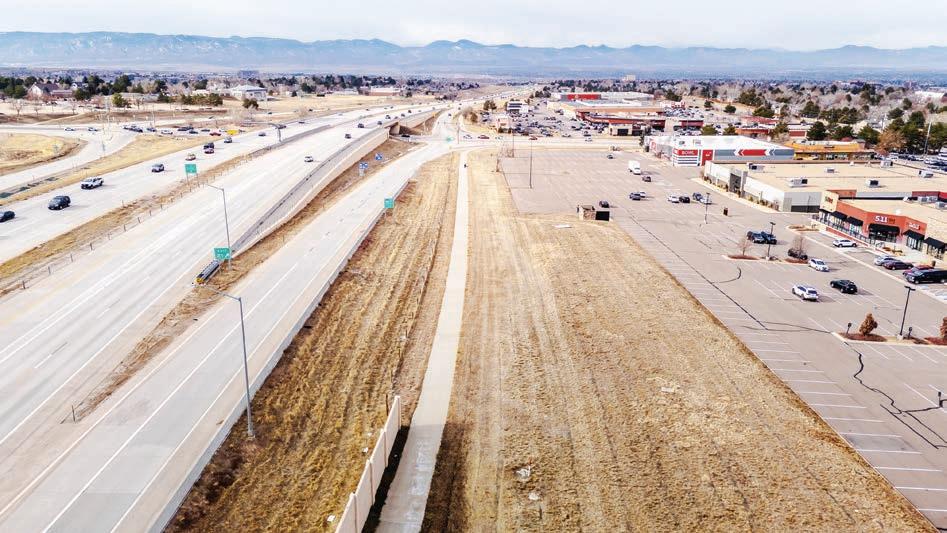







projects that aim to improve safety and accessibility along urban, non-freeway corridors within the metro area, especially for those who depend on other modes of transportation and multimodal mobility.
e following year, Douglas County was noti ed by CDOT that the pedestrian bridge project in the C-470 and University area was selected to receive $5.12 million in state funds, which accounts for a majority of the cost of the project.
e total budget for the project is $5.4 million.
“The pedestrian bridge will improve mobility for vehicles because they will no longer need to interact with cyclists and pedestrians when navigating through the area.”
Maisie Wingerter, Douglas County’s communication manager
e C-470 Trail is a CDOT asset and will continue to be owned, operated and maintained by CDOT. However, there will be additional work on the bridge, which includes trail improvements to tie the existing trail system to the bridge; and drainage, ramp, curb and gutter improvements.
e estimated completion date for the project is the end of December this year. For up-to-date information about potential tra c impacts, residents can get Cone Zone email noti cations by visiting tinyurl.com/Dougco-university-bridge.

verify and review removal orders “to ensure the student may be legally released to the agency.”
In a Douglas County Sheri ’s O ce statement, Sheri Darren Weekly said the sheri ’s o ce collaborates with federal law enforcement agencies but does not “actively engage in immigration enforcement at this time.”
“Regarding schools, our school resource o cers are dedicated to maintaining a safe and supportive environment for students,” Weekly said. “While they collaborate with other law enforcement agencies on matters of safety, their

Districts across the Denver metro area are grappling with how best to respond to community concerns about the possibility of immigration enforcement o ers showing up at schools.
SHUTTERSTOCK IMAGE
primary responsibility is to ensure the well-being of students and sta .”
However, in a shift from Kane’s and Weekly’s statements, Douglas County Commissioner George Teal said on Facebook that he supported ICE o cers removing children from schools “if needed.”
By Jason Harris of Foothills Kitchen & Bath
As Spring nears, customers appear to be thinking about more than cleaning their houses — they’re often considering wholesale changes. Whenever they say they’re contemplating a kitchen remodel, many know they’d like shiny new cabinets and counters, but have the usual suspect of questions that they don’t have any idea how the process works, nor how much it will cost.
Let’s get the painful part over with first. Unfortunately, there is often sticker shock. For most of us, shopping at the Big Boxes is our baseline, but we’re usually buying supplies for maintenance, and those generally cost less than what’s used for remodeling. There’s a reason why.
If stores carry inventory, manufacturers give them better pricing. However, even warehouses don’t have unlimited space, so they have to choose what items to stock — meaning what to buy in bulk at discount — or which to Special Order at higher pricing. The Big Boxes are designed to move thousands of products daily, so their goal is selling quantity. Consequently, they stock products used more for repair than remodel; further, they focus on lower price points. To use a car analogy, it’s like the warehouses will stock all the compacts (plus maybe a couple of colors in mid-size); in contrast, smaller dealers know their pricing advantage is on the mid to full-sizes, so that’s what they display.
You need to be aware, however, that differences between products can be internal; sometimes it’s not as easy to compare the quality between faucets or cabinets as it is between car models. In other words, car buyers know an Accord is larger and has a more powerful engine than a Civic, so they understand the price difference. That’s harder
when the boxes on the wall look the same. Consumers are effectively thinking, “Wow, why are these Accords so pricey?? I just saw a bunch of them at the Big Box for much less,” when the truth is they had seen Civics.
If you know your budget, it will save time. Imagine walking into an auto dealer and telling one salesman you want to spend $20K, while to another you say you can afford $30K; they’ll show you different models. Same with us. We know some manufacturers give more bang for the buck, while others offer more finish. If we have an idea where you’d like the overall cost of your project to fall, we’ll show you the products we think will help you hit that number.
Regarding the process, the first thing you need to be prepared for is this will take time. Whatever you pick will be in your house for 20-30 years, so don’t rush your decisions. If someone has never done a kitchen remodel before, we’ll spend time explaining each product category to help them understand the range of quality and prices among the various cabinets, counters and flooring. We’re pretty sure the customer will rinse and repeat this research at another two or three stores, before deciding where they felt most comfortable.
Maybe on the first visit, the homeowners had brought in dimensions and photos that we’ll use to begin a CAD drawing, while others will bring them along on a return visit; or perhaps we’ll go to their house to take our own measurements. Depending on how busy we are, we’ll generally be able to email first renderings within a few days. These are free services for us, but bear in mind that some stores will charge for this.
While this sounds quick enough, it’s actually just getting started. Maybe the homeowners discover the cabinets will cost more than they were expecting, so we’ll make a new drawing in another brand; maybe they’ve decided they want us to upscale.
Finally, one day they’ll say, “Let’s go ahead,” which starts a more rigid calendar. Cabinets take about 4-8 weeks to arrive; so most contractors would probably tear out the old kitchen maybe two weeks earlier and begin installing new flooring, electrical and plumbing. Hanging cabinets goes fairly quickly, so in 3-5 days the fabricator should be able to measure for counters. But it could take a week or more before they are installed, so you might want to consider keeping the old sink and having it reinstalled temporarily over plywood.
Even in a perfect world, be prepared for delays. There could be shipping damage, misorders or warranty issues; even more often, though, are change orders. Once we’re in the bustle of the project, clients will ask, “What if we replace all the doors or windows or lights or….?” It’s for these reasons that we suggest homeowners establish a slush fund of both time and money — it helps decrease the angst.













MAR17-21 | PACE CENTER



















9:00AM - 12:00PM
This fun-tastic adaptation is a delight for all actors and audiences! Come join Wendy and the boys as Peter Pan whisks them away to Neverland! All the classic characters are here… mermaids, princesses, lost boys

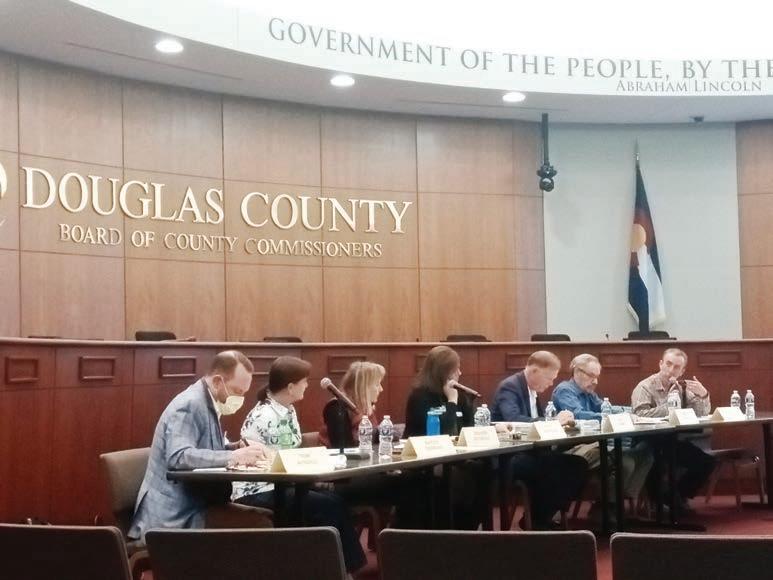




Brick Art & Design Lab
Ages 6 - 12
9:00AM - 12:00PM

of the experience, your child will be able to not only share information about famous artists, art forms, and art movements, but create their own unique works of art out of LEGO


In Snapology’s Brick Art and Design Lab camp, children will draw inspiration and guidance from great works of art like Da Vinci’s Mona Lisa, Van Gogh’s Starry Night, Wright’s Falling Water, and so many more! By the end and the crocodile! Not to mention the infamous Captain Hook and his crew of villainous pirates! Follow us to Neverland…second star on the right and straight on ‘til morning!

A “massive sports complex” doesn’t t with the surrounding area, Monica Wasden, a leader of the Highlands Ranch Community Association, said at the meeting.
e HRCA is the large, overarching homeowners association in Highlands Ranch. Tom Rundell, an open space committee member, expressed concern about HRCA’s private trail system.
Rundell asked: If the Wildcat plan ends up expanding “this regional trail system, would you be willing to open up your local trails and regional trails” to people who are not HRCA residents?


INTO THE WOODS JR. | MAY19-AUG2 | THE SCHOOLHOUSE







Into the Woods JR.

AUDITIONS COMING SATURDAY, MAY 17!
10:00AM - 7:00PM

| PACE CENTER

Must sign up for auditions online. Rehearsals will be three times per week from May 19 - July 19 followed by seven performances from July 25 - Aug 2.
A Parker Arts and Sasquatch Productions Youth Summer Musical Ages 10 - 18

e land in question is generally located south of Rocky Heights Middle School and west of Monarch Boulevard. e Highlands Ranch group isn’t just advocating for essentially open space on that land — it proposes that the county donate the land to HRCA. e organization would then build “passive” recreation facilities, such as a 5K trail, benches, shade structures and bike-only trails, according to its proposal document. HRCA would pay for the annual maintenance and care of the property, but it would be open to the general public, Wasden told Colorado Community Media.
Every so often, “we deal with a new (county) commissioner who has an agenda or plans for that property, and it’s been a rollercoaster for our residents,” Wasden said at the meeting. If HRCA owned the land, “we could control what’s back there and get o this rollercoaster.”
Commissioner George Teal has favored HRCA’s plan for trails and passive recreation. Lora omas, whose time as a commissioner recently ended, wasn’t a fan.
“We’re willing to consider it,” said Wasden, the board president of HRCA, adding that she can’t speak for all of her delegates. “We would have to take a vote.”
HRCA’s private trails are only in the Backcountry Wilderness Area, according to the organization.
In terms of existing public trailway, HRCA’s Wildcat plan would provide connectivity to the East/West Regional Trail that runs through north Douglas County, according to the organization.
HRCA’s Wildcat plan document says it would build a 5K trail that would be ADA accessible, an apparent reference to the Americans with Disabilities Act.
Eye on what’s called an ‘easement’ e meeting saw talk from the committee about adding what’s called a “conservation easement,” a document that protects the land from future property development, according to Shandro.
Into the Woods JR. features all your favorite characters - Cinderella, Little Red Riding Hood, Jack (and his beanstalk) and the Witch - in this lyrically rich retelling of classic Brothers Grimm fables. The musical centers on a baker and his wife, who wish to have a child; Cinderella, who wishes to attend the King’s festival; and Jack, who wishes his cow would give milk. When the baker and his wife learn that they cannot have a child because of a witch’s curse, the two set off on a journey to break the curse, and wind up changed forever. Complete details and audition link: parkerarts.org/auditions.





“It’s really exciting to me (to) know that 500 years from now, they cannot build houses or o ce buildings or whatever they might want at (that) moment in time,” Shandro said.
“Perhaps HRCA can buy the land from the county so the county can buy a piece of land somewhere else for a park,” omas previously told CCM. “I think it’s irresponsible to give away county land that was (provided) for a park.”
e open space committee meeting took place at the county headquarters in January in Castle Rock. Wasden spoke to CCM in February.
HRCA is “certainly open to entertain” a conservation easement for the Wildcat park land but hasn’t had a conversation with the county commissioners about that yet, Bailey said.















Mike Bailey, general manager of HRCA, noted that his organization is waiting for the county commissioners to evaluate the open space plan.
“We know there (were) discussions of another proposal. We understand that need. We support the needs for elds and the proposal — just not on this location,” Bailey told CCM.
Ultimately, the open space committee merely makes recommendations to the county commissioners, who serve as Douglas’ three elected leaders. Wasden didn’t know when the commissioners would consider the plan.
In the meantime, here’s a look at other details surrounding the proposal.
In its plan, HRCA also proposes that the county fund infrastructure, including for utilities.
An HRCA document listing probable construction costs provides an estimate of roughly $5 million.
“Because we have so many requests, are you willing to take less than the 5-some million dollars that you’re proposing?” asked Jennifer Drybread, a member of the open space committee.
“Yes,” Wasden said.
“ ere will be no ongoing management or maintenance costs for Douglas County,” HRCA’s plan says.
For more details surrounding the Wildcat Regional Park land proposal, see CCM’s earlier coverage at tinyurl.com/ WildcatParkLand.













Pet waste pollutes our local creeks and waterways. Dispose of pet waste in the trash. Harmful bacteria can end up in the water where we swim, fish and play. Visit

























































•
•
•





























































BY NELL LONDON CPR NEWS
As people age, a home that once was a perfect t can start to feel like an obstacle course. Families worry about safety and loneliness, and children may urge their parents to move. But even the idea of making a change can be unnerving — and then there’s the question of where to go and how to wade through the options for senior living.
Cameron Crawford has some advice for choosing the right senior living setup for your situation. After navigating the process with her own mom, she founded Next Steps Senior Placement in Denver to help older people and their families evaluate and select senior living communities. She also hosts a facebook page, Aging Parent Tribe.
Crawford spoke with Colorado Matters co-host Chandra omas Whit eld as part of our series “Aging Matters.” is interview has been edited lightly for clarity and length.
What’s the di erence between independent living, assisted living and memory care?
“Independent living” is actually really fun. I say it’s almost like Disney World for adults. And what it does is, it takes somebody that is doing really well and is pretty independent, but maybe they need just a few tweaks in their life to stay independent. Maybe they have stopped driving. at’s a big thing. And they can’t drive anymore, so they’re becoming isolated at home and so they just need transportation. Maybe it’s meals and they’re not cooking a lot, and that would be a bene t. Maybe they have a spouse that needs a little bit of care, but it’s kind of overwhelming for them.
So if we can take some of the things o their plate, like housekeeping, transportation, meals, and add socialization, other people around them, then they can be really successful there and go back to being more independent.
“Assisted living” is where you’re still pretty independent, but let’s say that you need assistance getting your socks on and your shoes on in the morning. Let’s say that you need assistance in the shower. Medication is a huge part of it. Sometimes I talk to people, they’re on 20 di erent vitamins and meds, and that would confuse me. But we can move them to assisted living and they can manage their medication.
“Memory care” is where someone has dementia or they are having some kind of cognitive decline, where they’re not appropriate for assisted living. ere are plenty of people with dementia in assisted living and they’re doing just ne. But if it be-
comes a safety risk, so that you’re wandering, then that’s no longer a safe place to be. Or, something people don’t think about: if they can’t advocate for themselves and ask for help. In assisted living, they want you to push that button and ask for help. In memory care, they’re going to anticipate your needs and come to you. Usually it’s a smaller number of people and it’s a higher caregiver ratio. And so if someone is needing more attention, memory care could be the right option.
Eighty percent of people say they want to “age in place.” When is it time to move?
Most people want to stay home, and I totally support that. And you can do that by modifying your home. You can do that by bringing in caregivers. But there’s a point where nancially, it doesn’t make sense to stay at home. People think, especially in Colorado, “I have a basement. I’m going to have somebody come live at my house and help me.” Well, having somebody live with you costs between $15,000 to $30,000 a month. And most people I know can’t afford it. So some people move because of nancial reasons.
A lot of times when people move, it’s a married couple and they’re aging di erently, and one of the spouses is healthier and they are just worn out. And they’re the ones that, not only do they need someone else to help with the care, but they want friends around. ey haven’t been able to get out and see people and they’ve become isolated in their house. And so it would bene t them to move.
Why it’s better to plan ahead
First of all, I know I love my children, but I like to make my own decisions. So I would rather tell them where I want to go than to have my kids come and say, “oh, you’re going here.”
A lot of times it might be the adult kid that calls me and connects me with their parents. But then I love to just go on tours with the parents, to go see all the places, to talk about what’s important to them, to know their personality, where they might t. We usually stop and have lunch there. at way you can try the food, because food’s really important. If you’re moving somewhere, you want to like the food.
I say, OK, plan A, why don’t you stay home as long as this is working. But let’s have a plan B in the works, so if there’s a crisis, then we know what your preferred options are.
Advice for an older person who doesn’t have a family member to lean on
Number one, I know that they are nervous and scared because they don’t know who’s taking care of them. And so, it’s a pri-


ority for my company to work with those people and to help them through the process, because it’s scary.
I would usually recommend working with a placement agent that’s a local agent. ey’re the people that live here in Colorado. If you can’t drive, they’ll come and pick you and take you to the community. ey’ll tour with you. ey’ll sit and have lunch with you, and so they’ll talk with you through the whole thing. Because it’s a lot to process.
The most important questions to ask as you’re looking for the right place e rst thing you want to ask is, you want to have them be transparent about what the nancial obligation is, and what the contract looks like. In Denver, a lot of times we can nd something for almost any price range, but you want to know what that looks like.
Some places you buy in, and so you’re kind of saying, this is where I want to be for the rest of my life. Some places are monthto-month.
Is there going to be a community fee? e majority of places have a one-time community fee. In Denver, it could go anywhere from a thousand dollars to over $20,000. And so you’ll want to know that upfront.
You also want to know what they can and they can’t do. And it’s almost more important to know what they can’t do. So, if someone is a sliding scale insulin diabetic, which means every day it adjusts, there’s really only four or ve places in Denver that can meet that need. So why waste your time looking at a lot of other places if they’re not going to be able to meet that need.
So when you talk to them, you want to be very clear about what the care needs are. And be very transparent. I feel like it’s better to be transparent upfront than to surprise them later on.
Avoid the “chandelier e ect” ings right now are really pretty. e way that people build assisted living — or they’ve remodeled them recently, if it’s an older place — they are beautiful. In fact, they look prettier than my own home. Sometimes I’ll take pictures and be like, ‘oh, I should do that in my kitchen.’
But a lot of times it’s easy to be distracted by how pretty someplace is. And you look at the chandelier or you see the swimming pool, but what you don’t think about is the care part of it, which is really why you’re moving.
Who’s running the building? How long has the sta been there? What’s the caregiver ratio? Who’s the executive director
that’s in charge of the whole building, and how long have they been there?
What does this cost?
Independent living will run anywhere from $3,000 to well, actually, there’s a $17,000 room. It’s beautiful, it’s got a great view, and a very nice chandelier. It’s gorgeous.
Assisted living, there’s going to be two di erent costs. ere’s going to be, typically, the room cost and in Denver right now, the averages are running between $3,500 and $6,000 a month. And then on top of that, there’s typically a care cost.
Will Medicaid pay for this?
Oh, well, we wish.
e majority of places are all private pay. Private pay can be out of pocket. It can be if you have a long-term care policy. And, if you are a veteran, many people miss this bene t called “Aid and Attendance.” If you’re the vet, it can be over $2,700 a month. And so it could be a combination — you’re paying a little bit out of pocket, and then you’re also getting an “Aid and Attendance” bene t.
Now, Medicaid, and in Colorado we also have PACE and InnovAge: those will pay for speci c communities. ey have to have a speci c license. It has to be approved. And for InnovAge, it has to be in a speci c zip code.
Very, very few places will accept somebody on Medicaid — I’m just going to use that as a generic term — that’s already on Medicaid and just wants to move in and use their Medicaid bene ts. ere are some really nice places that will allow you to ‘private-pay’ for one to two years, and then you can stay there on Medicaid.
What are some tips to helping this move go well?
It really helps if the senior can embrace the idea and be all-in. eir attitude can make a huge di erence. And if you go in saying, ‘Alright, I know this is uncomfortable. I know I didn’t want to do this, but let’s make the best of it. And I’m going to try everything and nd my people here,’ they’re going to have a really good transition.
I think it’s really important if they have family, for the family to be involved. Knowing who works there is important. Don’t just know the executive director, know who the activity director is, meet the chef, meet all the other people that are in charge of taking care of your parent.
is story is from CPR News, a nonpro t public broadcaster serving Colorado. Used by permission. For more, and to support Colorado Public Radio, visit cpr.org.
BY TAMARA CHUANG THE COLORADO SUN
Colorado’s unemployment rate rose to 4.4% last month, up one-tenth of a percentage point and the highest in three years. At the same time, there are fewer job openings and fewer people ling to start a new business.
While that seems like the opposite direction state o cials prefer, there were some positives and additional context to better understand what happened, Secretary of State Jena Griswold said during a news conference Jan. 27.
“Job and GDP growth numbers are encouraging and indicate the economy is stabilizing after several years of in ation,” Griswold said. “Colorado remains in a strong economic position and the state and national outlook is positive.”
e state added jobs last year — an average of 4,500 new jobs per month. At 3.3 mil-
lion, the state’s labor force is the biggest it’s ever been. Denver-area in ation was down to 2% last month. New business lings in Colorado fell 0.4% in the fourth quarter from a year ago, but renewals were up 6.5%, so companies are sticking around, she said.
But the rising unemployment rate is a concern for area economists. e state’s jobless rate also went the opposite direction of the nation’s, which fell one-tenth of a point to 4.1% in December.
“On one hand, we’re seeing continued job growth. We’re seeing wage growth and income growth and GDP growth and so on. All that is pointing to continued expansion of the economy,” said Brian Lewandowski, executive director of the Business Research Division at the University of Colorado’s Leeds School of Business.
“But we do need to pay attention to this rising unemployment rate at 4.4%, compared to 3.7% a year ago at the same time,” he said. “We need to be watching this closely
to understand if it’s starting to point to some new underlying slowing in Colorado’s labor market. I wouldn’t pretend that a 4.4% and rising unemployment rate is simply OK.”
At 4.4%, that’s lower than the 5.19% average over the past 50 years. But it’s higher than the 10-year average of 3.86%, which includes the extreme spikes during the COVID pandemic.
Fellow CU economist Richard Wobbekind said the data is showing some weakness but other bits can be interpreted as a good thing. Fewer job openings mean that employers have found the workers they need. Currently, there are about 1.2 job openings for every unemployed Coloradan. Back in the pandemic recovery, when employers complained about worker shortages, there were often 2.5 jobs and up to 3 job openings for every person looking for one.
“Perhaps when we look at this data down the line we’re going to say, ‘Well, this was good news because there was a more plen-

At Colorado Eye Consultants, we are proud to offer oculofacial plastic surgery by AS OPRS fell owship t rai ned & b oard-cer tified o ph t halmologis t , Dr. Carl Rebhun. With years of advanced training and dedication to his patients, Dr. Rebhun combines the latest surgical innovations with artistic precision to achieve natural, rejuvenating results. WH
EXT EN SIV E TRAINING: ASOPRS fellowship trained and board-certified.

INNOVATIV E T EC HNIQUES: Utilizes the latest and most innovative techniques.
EXCEPT IO NA L C AR E: Personalized consultation to meet your goals.
tiful labor force,’” Wobbekind said. Cynthia Eveleth-Havens, a spokesperson for the Colorado Chamber of Commerce, said that it’s still a challenge to nd workers, even if the economy has improved.
In a Chamber survey of 169 employers in December, 41% of the companies said they still had open positions that are di cult to ll. at’s better than the 48% who said the same thing in 2023 and the 66% in 2022. But the survey also revealed that companies are holding back on increasing their workforce in the new year. In 2022, 48% had plans to increase their workforce. is year, it’s 29%.
“ ere’s certainly more balance in the job market when it comes to lling open positions, but we’re nding that there’s still a strain on employers,” Eveleth-Havens said. is story was printed through a news sharing agreement with e Colorado Sun, a journalist-owned nonpro t based in Denver that covers the state.


DUA L EXPERT IS E: Specializes in both cosmetic & medical procedures.


BY TAMARA CHUANG THE COLORADO SUN
As day one of a planned two-week walkout began, about a dozen King Soopers employees were up before dawn on Feb. 6, pacing in front of their store in Centennial. Some walked the perimeter on the sidewalks as cars passed by. All carried white signs with red lettering asking customers to not patronize their employer. eir union representative with United Food and Commercial Workers Local 7 forbade them to speak to a reporter, even as one employee questioned why not? Why aren’t they allowed to tell the people why they are outside the store instead of inside?
At a Safeway parking lot across from a King Soopers on Feb. 6, union o cials held a news conference and said the workers at the two Pueblo stores would join the strike starting Feb. 7. Local 7
President Kim Cordova said she spoke for the workers, who feared repercussions by the employer. Intimidation is part of the union’s multiple unfair labor practice claims against the Kroger-owned chain. “King Soopers has some big problems. I mean when you have 96 to 100% of the workers vote to strike, there’s real issues,” Cordova said. “And here we are for the second time in back-to-back bargaining cycles. Here we are with another unfair labor practice dispute against King Soopers.”
More than 10,000 King Soopers employees in the Front Range are involved, which is a few thousand more than three years ago when King Soopers walked out in January 2022. More contracts have expired. ey’re protesting unfair labor practices, which allege surveilling and disrupting discussions between workers and union reps. A “last best and nal o er” from the company was rejected in mid-January. Not all union members walked out on day one. Workers in Colorado Springs voted last Friday to authorize a strike. But some of their contracts have not yet expired so they could join in the coming days, union o cials said.
Find an updated list of a ected locations at public. ourish.studio/visualisation/21490216.
Grocer preps for strike
ere are 77 Denver-area stores involved in ursday’s work stoppage. Because of that, King Soopers hired tem-
porary workers to keep the stores open, spokesperson Jessica Trowbridge said Wednesday.
“We have an obligation to the community to make sure they have access to fresh and a ordable food and pharmacy services, so we’ve gone ahead and hired temporary sta to come and help us serve the community at this time,” Trowbridge said.
All stores will remain open, though locations impacted by the strike will operate on limited hours. Stores will open between 7 a.m. and 8 p.m, with pharmacies open 9 a.m. to 7 p.m. during the week.
On Saturdays, pharmacy hours will be 10 a.m. to 5 p.m., closing from 1 p.m. to 1:30 p.m. for lunch. Pharmacies will be closed on Sundays.
All other stores in the state, including City Markets, will stick with their normal hours.
Other King Soopers stores remain open
Not all King Soopers in metro Denver are unionized. ere are nonunion stores in Brighton, Castle Rock, Erie and Firestone. ere are also two ornton locations — at 13700 Colorado Blvd. and 13525 Quebec St. — that aren’t part of the strike. Other nonunion stores farther out include Bennett, Conifer and Windsor. Union stores outside of Denver remain open, though they could join the strike at a later date. Besides Colorado Springs workers who are ready to join the strike, others could take a strike vote soon. Labor contracts in Fort Collins, Greeley, Longmont and Loveland expire Feb. 15.
Also, many locations only have some of the sta in a union, such as the meat departments in Boulder and Parker. But those stores are still impacted by the strike and limited hours.
Local 7 also represents workers at four Western Slope City Markets, including two in Grand Junction, one in Fruita and one in Clifton. No strike vote has been announced yet.
Unproductive negotiations, heated accusations
Negotiations began in October on the new contract, which expired Jan. 5, and stopped inde nitely on Jan. 16. No further meetings were scheduled.
In unfair labor practice claims led with the National Labor Relations Board, the union said King Soopers was “illegally threatening members with discipline” for wearing union clothing or union buttons, surveilling workers in discussions with union sta and “gutting $8 million in retiree health bene ts for wage increases for active workers.”



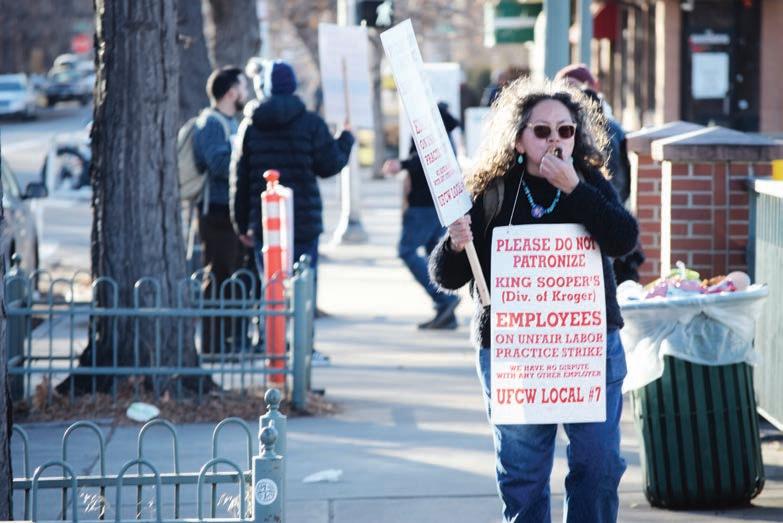



table, Cordova said, “We need the company to engage in good and fair bargaining, and they need to resolve the unfair labor practices. ey have to provide information that we need around sales.”
King Soopers pushed back on all the allegations. In a statement, the company said it responded to all the union’s requests, and even “dedicated six hours to answering every question raised,” during a one negotiation session. e company has “acted in full compliance with both the law and collective bargaining agreement obligations.”
It led its own unfair labor practice claims against the union for causing disruptions, such as mentioning a strike on Dec. 17, and rejecting company o ers without providing their own proposal for the workers. ( e union said it has made proposals.)
e company had hoped to avoid a strike, like the one three years ago. Earlier this week, King Soopers President Joe Kelley asked Local 7 to “reconsider their approach and prioritize the best interests of our associates, their members and the communities they serve.”
King Soopers has publicly shared its o er to workers and urged employees to look and vote on the proposed contract, instead of voting on unfair labor practices.
King Soopers o ered raises to boost store clerks’ hourly wage by $4.50 over four years, with top clerks earning above $27 an hour by 2028. Adding in health care and pension bene ts, that would be $29.48 an hour. e current wage is $22.68, the company said.
The union’s sticking points
While making sure grocery workers can make a livable wage is a big concern, Cordova said the top concern is inadequate sta ng, and that impacts consumers. “Our ght over understa ng is real. Ev-

ery customer sees that they’re waiting in long lines. ey’re seeing empty shelves. And there’s not a supply chain issue here. All the product is in the back room. ere’s just nobody there (to restock),” Cordova said. “ ey don’t have enough sta in the stores to properly change the price tags or prices in the system. So many customers’ experience (is) the price they’re paying is higher than what’s advertised. And that’s a big issue when people around the country are already upset about the high cost of groceries.”
Reyna Carpenter, the seafood manager at a King Soopers in Pueblo, said she joined the company a decade ago when there were four people working a shift in her department at a time. Now, there’s two. And sometimes she gets pulled over to the meat department to help. If one of the shift workers is tagging items or restocking, that means there’s only one employee helping customers. And that’s what’s happening storewide, she said. When check out lines get longer, cashiers abandon the other chores. at means store shelves aren’t getting restocked or properly tagged with the new pricing for the week. Or there’s no shopping carts, so another sta er has to run out and gather them up in the parking lot.
“On ad days, it’s ridiculous,” said Carpenter, who is also on the union’s bargaining committee. “You have to rearrange everything. … at takes time. We used to have people that came in and worked with us. We had more sta ng in the morning and throughout the afternoon.”
Kroger owns 118 King Soopers and 32 City Market stores in Colorado. Not all are unionized.
is story was printed through a news sharing agreement with e Colorado Sun, a journalist-owned nonpro t based in Denver that covers the state.
BY MCKENNA HARFORD MHARFORD@COLORADOCOMMUNITYMEDIA.COM
Every Sunday for the last 10 years, Mary Grothe has cooked her family a salmon dinner. e tradition inspired Grothe to expand her table to the broader Castle Rock community earlier this year with the opening of Sunday Salmon, a restaurant where diners can eat for free.
Grothe said she felt called by God to serve her community, so her goal with o ering free meals is to nourish both stomachs and hearts.
“I feel like the gift the Lord has given me … is to show (people) his love through the way they are greeted at the restaurant and guided through the process,” Grothe said. “Every person who walks in the door is such a blessing.”
Located at 207 Wolfensberger Road, in the former Village Inn, Sunday Salmon o ers two dinner services at 5 p.m. and 6:30 p.m. each Sunday, except Feb. 9, March 23 and April 20 when it will be closed.
Similar to a family dinner, the tables in the restaurant are communal, with seating for up to 48 people, and meals are served family-style. Grothe said she wants to build a space to foster relationships among neighbors and give people an outlet to help.



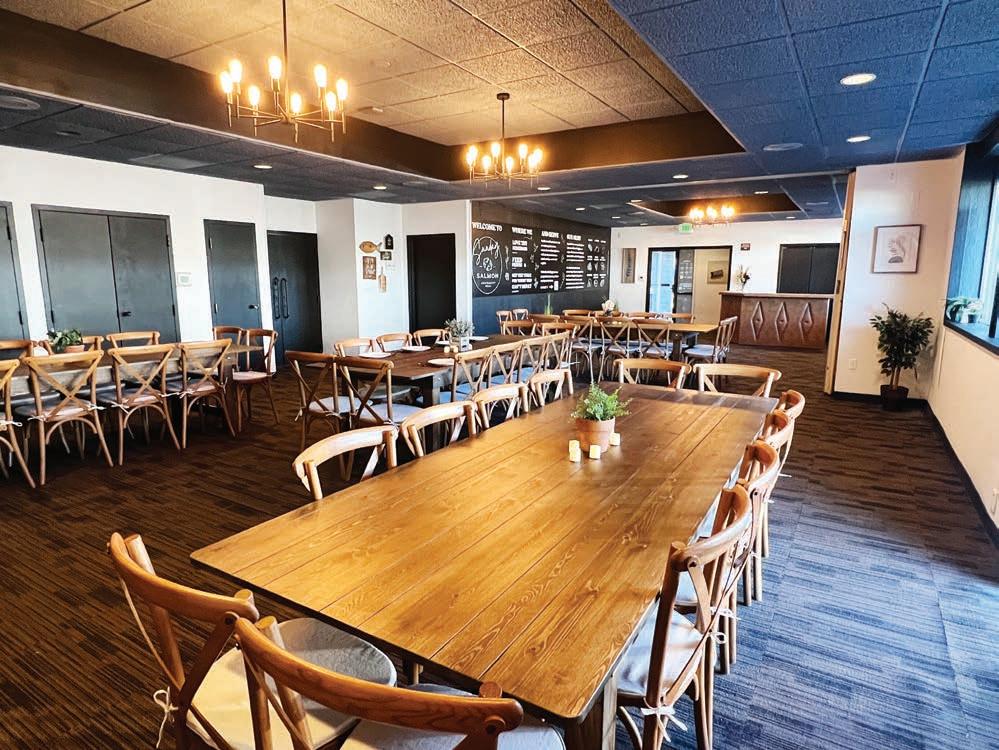
With roughly 3,000 people in Castle Rock living in poverty, according to the U.S. Census Bureau, Grothe said she also wants to help alleviate food insecurity.
“ is meal is not only to feed and nourish them, but allows them to break bread with neighbors who have access to
means, resources and job opportunities,” Grothe said. “Transformation occurs when people from two di erent walks of
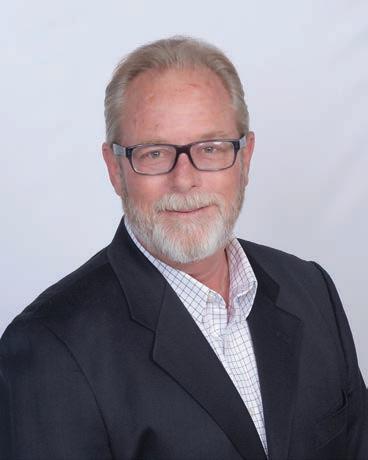
life come together.”
Grothe said the restaurant uses organic, gluten free and seed oil free ingredients and has an emphasis on a wellbalanced meal. Diners have the option between salmon and chicken for the main dish with a selection of vegetables, rice and bread for the sides.
Since meals are free to all diners, the restaurant relies on donations and renting its space to fund operations, as well as volunteers to cook and serve dinner. e space can be rented for $75 an hour for large groups or clubs.
Grothe said donations so far have not only funded more than 300 meals and rent costs, but also contributions to at least a dozen people in need to cover housing costs, gas, car repairs, bus tickets and more.
“It is unbelievable, when you are in need and have limitations, how di cult it is to get back up on your feet,” she said.
If Grothe can nd the support, she hopes to expand the free dinners to Tuesdays and ursdays as well. Grothe said she would like to work with local businesses to sponsor meals to help make that happen.
“ ere’s so many well-intentioned people in Castle Rock who don’t know how to get plugged in and give,” Grothe said. “Sometimes people just need the directions to get things done.”
Grothe said that the impact that has already been made highlights the importance of community and she hopes to make Sunday Salmon a permanent neighborhood staple.
Reservations can be made at www.sundaysalmon.com/reservations and walkins are welcome.

One of my earliest childhood memories is walking down Federal Boulevard in Denver with my parents, older brother and a group of people as they all chanted “¡Sí se puede!” (“Yes we can!”)

It was a hot summer day, and I remember my feet hurting and feeling fatigued from the scorching sun. As a little girl, I didn’t understand why my parents had brought me and my brother to this marcha that led all the way to Civic Center Park. I kept telling my parents to just get in the car and drive alongside the people, but I was clearly missing the point.

I would ask my parents “Why are we marching?” “What is this for?” and they would explain, but in my mind I couldn’t grasp the concept. I couldn’t understand that people from a di erent country were considered “bad people” or “criminals” because they immigrated to the U.S. for a better life. I didn’t see the problem. To me it was as simple as moving from state to state here in the U.S.; to me they were my parents, my brother and my friends. However, as I tried to grasp the idea, to this day I remember hearing my mother’s voice as clear as day telling me, “Just say it with us: Sí se puede.”
ose words have stayed with me since then. As my dad hoisted me up to his shoulders, I remember waving a little Mexican ag and chanting with everyone, and after that, the road seemed better. e burning sun didn’t feel so bad anymore. Over the years, I began to understand the concept more and more as I saw how it a ected the lives of my parents and my
In the competition of life, whether at home, work, or in the pursuit of personal dreams, there’s one adversary we often fail to recognize: ourselves. Too often, we unknowingly become our own most signi cant competitor. is isn’t because of a lack of ambition or e ort but because we allow self-doubt, fear, and negativity, what many refer to as “head trash,” to cloud our judgment, blocking our progress. Recognizing this tendency is the rst step to getting out of our own way and unlocking our full potential.
e voices in our heads are powerful, and when those voices are negative, they can be debilitating. oughts like “I’m not good enough,” “I’ll never measure up,” or “Why even bother?” can sabotage even our best e orts before we start. In addition to our internal critics, we’re often surrounded by external negativity,





brother.
I saw it when my parents had to work every night, come home to get me and my brother ready for school and then go back to work with no hours of sleep. I would wonder why they couldn’t get di erent jobs with better work hours. en, when my dad was working in a toxic environment, I wondered why he couldn’t get a job that didn’t mistreat him.
As an undocumented person, the options were and are very limited. Even if you are trying to do the “right thing.”
And by the “right thing,” I mean living the American Dream of working until you have nothing left to o er, providing a good life to your children and yourself, and simply just working to the success and family values that this country preaches. I saw it when my brother was in high

school, as he was approaching graduation. He had a job o er that he was more than quali ed for. He went to the interview, and they thought he was the perfect t, but then the di cult question came: “Are you a U.S. citizen?” e answer was no.
Despite the challenges, that didn’t stop my brother or my parents from moving down the road. During a time like today, where I hear attacks on my immigrant brothers and sisters, friends and family members, I nd myself more worried than they are. ese days, I am often comforted by my immigrant parents who say, “Don’t worry. We can’t let fear rule our lives. We have to keep moving forward.”
It’s a bit ironic to say that I, a U.S.-born citizen, am more scared of what’s to come than they are, but I think that’s a true testi-

mony of how resilient they have become. It shows that no matter what, their spirit will never be crushed. I’m not thanking this system for making them resilient; I think they have always been resilient, and these are just the kind of people they are. Who wouldn’t want a kind, resilient and brave person on their team?
But I guess that doesn’t matter.
“It just feels like it’s never enough,” said State Rep. Elizabeth Velasco during an immigrant voices press conference at the state Capitol on Jan. 22.
Velasco mentioned that she is co-chair of the Democratic Latino Caucus, vice chair of the Energy and Environment Committee and has been a re ghter.
“And I have still been told to go back to my
SEE RAMIREZ, P21

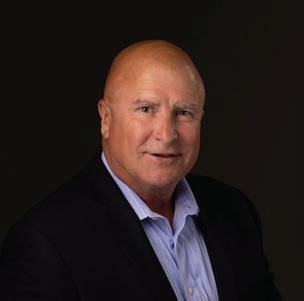
voices of doubt, cynicism, and criticism from people around us. is negative “surround sound” can reinforce the belief that we’re destined to fail. is is why developing and maintaining a healthy self-image is crucial. How others see us pales in comparison to how we see ourselves. If we don’t believe in our abilities, how can we expect others to? A healthy self-image isn’t about arrogance or blind con dence; it’s about seeing ourselves honestly, embracing our unique strengths while acknowledging and working on our areas for growth. To build and sustain this healthy selfimage, it’s essential to surround our-
selves with people who lift us up rather than pull us down. Seek mentors, coaches, and peers who provide advice, encouragement, and hope. ese individuals don’t just cheer us on; they challenge us to think bigger, push harder, and strive for our goals, reminding us of what’s possible when tempted to settle for less. Equally important is eliminating the sources of negativity in our lives. Whether it’s a toxic colleague, a critical family member, or an unproductive habit like doom-scrolling social media, these inuences can drain our energy and erode our con dence. It’s not always easy to set boundaries or let go of relationships, but doing so can be transformative. e less time we spend defending ourselves against negativity, the more energy we have to invest in growth and success. In life, competition is inevitable. We face it in sports, business, and even our
personal goals. When approached with the right mindset, competition can be a powerful motivator. It pushes us to go beyond our perceived limits, stretch our capabilities, and achieve what we once thought impossible. is is the essence of a healthy competitive spirit; it thrives on abundance, where we believe there’s enough success and opportunity for everyone. However, competition can become harmful when viewed through a lens of scarcity. A scarcity mindset whispers that someone else’s success diminishes our chances. It convinces us that the e ort isn’t worth it, that the climb isn’t worth the view. is mindset doesn’t just hold us back; it gives power to our insecurities, further feeding the cycle of self-sabotage.

Fear for my country
I awoke in the middle of the night last week, fearful for our country. What was the source of my fear? Pete Hegseth had just been con rmed to head the largest, most powerful military machine in the world. So why is that a source for fear? It was less his personal, egregious history that disturbs me. Nor his nonpro t managerial failures. We have all make mistakes and, provided we learn from them, should be given a second and even a third chanced.
It is rather his philosophy toward the use of military might that is the source of my fears. It is the tattoo on his body that represents his vision. In his speeches and writing, he lauds the valor of the medieval military campaign that he sees as a model for today: the Crusades, in which Christian warriors from Western Europe embarked on ruthless missions to drive the in dels out of the Holy Land, ignoring the destruction it caused.
So, here we stand. Will he marshal his military to drive out the invading, asylum seekers and hard-working undocumented immigrants as requested by his boss? Will he be marshaling them to start a civil war to drive their supporters out those northern, sanctuary cities that have been taken over by those liberal heretics, a view expressed by his boss in his volcanic explosion of vitriol in response to the deacon’s speech at the National Cathedral? at is the source of my fears? I can only hope and pray that they are paranoias.
Ernst Popke, Highlands Ranch
Labels create division
Behavior and choice don’t make you more or less of an American, and anyone who attempts to de ne “American” under any personal standard will fail before they even begin. Names and labels are used because it makes it easier to divide people (borders do the same). It’s a false security blanket. ere are compassionate “conservatives” and there are conservative “liberals.”
I want leaders who at a minimum are intelligent, creative, have conviction, practice compassion and have the ability to unify toward actual solutions. I don’t want people in public o ces who are mean, petty, blatantly corruptible, prone to divisiveness, and unintelligent about the di erence between a solution and a diversion.

Part of the fascist playbook is creating a de nition of what is acceptable and right, and vilifying and blaming those who do not meet that ideal. e only thing that makes us “American” is citizenship, a legal de nition. After that, there are 340 million di erent types of Americans, the majority of whom are so just because they happened to be born here.
e key to breaking free is to stop competing with ourselves. Instead of listening to the inner critic, we must focus on what’s possible. Imagine what could happen if we stopped seeing obstacles and started seeing opportunities. When we get out of our own way, we remove the self-imposed limits that keep us stuck in our comfort zones. What I am suggesting here is embracing growth. Each challenge becomes a steppingstone, each setback a lesson, and each success a reminder of what we’re capable of. With a healthy selfimage rooted in abundance, we become unstoppable, ready to face every challenge, achieve every dream, and free
Colorado Community Media welcomes letters to the editor. Please note the following rules:
• Email your letter to letters@coloradocommunitymedia.com. Do not send via postal mail. Put the words “letter to the editor” in the email subject line.

I encourage all of us Americans to practice more acceptance of the “other” while keeping a high standard, whatever that means for you, toward our leaders, policy makers and holders of public o ce.
Paul White, Highlands Ranch
Stick up for journalism

Control of the media is being pursued. I never thought I’d see the day in the United States, let alone in my little city of Lone Tree. Rep. Brandi Bradley (R) represents District 39 (including Lone Tree), suggested Kyle Clark from 9NEWS be “arrested on mis and dis information!!!!” without any proof or facts of what “mis and dis information” she believes has been presented. She then said “to all the liberal media and all of the leftish politicians who think or thought they were above the law … it’s about to rain on your parade and we are going to sit back and eat popcorn …”

I still struggle with how non-“leftish” politicians say they are the law and order party, yet they continue to lie and encourage violence.
We must continue to stand up for independent journalism; otherwise, welcome to the new China/Russia/Iran, etc.
Carol Sorensen, Lone Tree

ourselves from self-limiting beliefs. e only thing standing between you and your potential is you. Recognize the power of your thoughts, surround yourself with the right people, and embrace a mindset of abundance. When you do, you’ll not only stop being your own worst enemy; you’ll become your greatest ally.
I would love to hear your story about how you will let the best version of yourself take center stage at gotonorton@ gmail.com. When we realize that the climb is always worth the view, it really will be a better-than-good life.
Michael Norton is an author, a personal and professional coach, consultant, trainer, encourager and motivator of individuals and businesses, working with organizations and associations across multiple industries.
• Submit your letter by 5 p.m. on Wednesday in order to have it considered for publication in the following week’s newspaper.
• Letters must be no longer than 400 words.
• Letters should be exclusively submitted to Colorado Community Media and should not submitted to other outlets or previously posted on websites or social media. Submitted letters become the property of CCM and should not be republished elsewhere.






























A publication of
Call first: 115 Wilcox St., Suite 220, Castle Rock, CO 80104
Mailing Address:
750 W. Hampden Ave., Suite 225 Englewood, CO 80110
Phone: 303-566-4100
Web: HighlandsRanchHerald.net
To subscribe call 303-566-4100 or Scan this QR Code

BROOKE WARNER
Executive Director brooke@ntln.org
LINDA SHAPLEY Director of Editorial & Audience lshapley@coloradocommunitymedia.com
CHRISTY STEADMAN South Metro Editor csteadman@coloradocommunitymedia.com
HALEY LENA Community Editor hlena@coloradocommunitymedia.com
ERIN ADDENBROOKE Marketing Consultant eaddenbrooke@coloradocommunitymedia.com
LINDSAY NICOLETTI Operations/ Circulation Manager lnicoletti@coloradocommunitymedia.com
BUSINESS INQUIRIES
For advertiser or vendor questions, please email our business department at accounting@ coloradocommunitymedia.com
Columnists & Guest Commentaries
Columnist opinions are not necessarily those of the Herald.
We welcome letters to the editor. Please include your full name, address and the best number to reach you by telephone.
Email letters to letters@coloradocommunitymedia.com
Deadline Tues. for the following week’s paper.
BY SUZIE GLASSMAN SGLASSMAN@COLORADOCOMMUNITYMEDIA.COM
Colorado has long been a pioneer in school choice, o ering families various educational options, including public, charter, private and magnet schools, as well as open enrollment across district boundaries since 1994.
According to the Reason Foundation, data from the Colorado Department of Education showed that more than 199,000 students, 28% of those enrolled in traditional public schools statewide, used open enrollment during the 2023-24 school year.
While National School Choice Week, which was celebrated this year from Jan. 26 – Feb. 1, showcased these opportunities, it also raised questions among some policy advocates about the equity of access to these options.
Director of the National Education Policy Center Kevin Welner, explained that while school choice was initially designed to decouple educational opportunities from residential zip codes, meaning that where you lived no longer had to de ne the quality of your education, that doesn’t always play out in practice.
“Unconstrained school choice programs… often add a layer of strati cation on top of the existing residential strati cation,” Welner said.
“Parents with more social capital or exible resources are better positioned to research options, meet application deadlines and provide transportation, giving their children a signi cant advantage.”

Highlands Ranch Herald
A legal newspaper of general circulation in Highlands Ranch, Colorado, the Herald is published weekly on Thursday by Colorado Community Media, 115 Wilcox St., Suite 220, Castle Rock, CO 80104.
Send address change to: Highlands Ranch Herald, 750 W. Hampden Ave., Suite 225, Englewood, CO 80110

Colorado Trust for Local News asks readers to make us aware of mistakes we may have made.
Email linda@cotln.org if you notice a possible error you would like us to take a look at.


is concept, which Welner called “parental e cacy,” can lead to a system in which the “rich get richer” and the “poor get poorer.”
“In a fair system, we wouldn’t want to allocate educational opportunities to kids based on parents’ education, wealth or ability to work the system,” he said.
School choice racial diversity across Denver-area districts
Student enrollment in Denver Public Schools and Adams 12 Five Star Schools re ects their communities’ racial and cultural diversity.
DPS reports that 74% of its students are from communities of color, and Adams 12 shows a similar trend, with more than 70% identifying as Hispanic, Black, Asian or multiracial.
In contrast, Je erson and Douglas County public schools are far less diverse. In Je erson County, students of color make up just 40% of the population, while in Douglas County, the gure drops to 25%.
ese disparities grow even larger in private schools, where white students account for more than 75% of enrollment in both districts, leaving Hispanic, Black and Asian students signi cantly underrepresented.
Charter schools, intended to be a more accessible alternative to private schools, show mixed results. In Je erson County, some charter schools re ect the diversity of public schools, but in Douglas County, many charter schools have predominantly white student populations, resembling private schools more than the communities they serve.
Yet, Dan Schaller, president of the Colorado League of Charter Schools, said that it’s important to “zoom out” and look at the aggregate picture when analyzing the demographics of charter schools rather than just focusing on individual situations.
According to statewide data, charter schools serve a higher percentage of students of color and English language learners than traditional public schools, Schaller said.
He also referred to a new report from the Keystone Policy Center that highlights the strong academic performance of Colorado charter schools, particularly their ability to



Colorado families have benefited from a diversity of school choice
support students and recover from pandemicrelated challenges.
Barriers to access
Even charter schools, which are publicly funded, sometimes create hurdles for families. Welner points to practices such as narrow enrollment windows, in-person registration requirements or the need for extensive application materials, all of which disproportionately disadvantage lower-income families.
“Sometimes it’s sneaky; sometimes it’s just careless,” he says of these barriers. “But it does play out in ways that disadvantage some students and advantage others in a way that’s entirely predictable in terms of who’s advantaged and who’s not.
“For students with disabilities, there are a whole host of additional issues about nding a school that has the resources that the child needs and that is willing to accept the child,” he continued. “If you’re talking about voucher systems, private schools have enormous discretion on which students to accept, and we see that with other school choice systems as well. Some schools will provide the resources that a child needs to address the child’s disabilities, and some schools will either deliberately or carelessly, simply not have those resources available.”
Transportation is another critical factor. Private and charter schools rarely provide busing, limiting access for families without exible schedules or reliable vehicles.
Schaller acknowledged but challenged the perception that charter schools lack diversity or focus only on select populations.
“Charter schools are, generally speaking, re ective of the communities in which they are founded,” he said, adding that they often intentionally serve underserved populations.
Seeking solutions Welner suggests that addressing inequities in school choice requires thoughtful system
design with equity at its core. Federal magnet school programs, he says, are a successful example, promoting socioeconomic and racial diversity through transportation assistance and weighted lotteries.
Charter networks like DSST Public Schools (formerly known as Denver Schools of Science and Technology) are often highlighted for their success in improving academic performance and graduation rates.
According to DSST’s website, its eight campuses, which serve middle and high school students, are committed to “ensuring that the outcomes of DSST students are high-achieving and do not correlate with any predictable social or cultural factors.”
Elena Mascarello, a junior at DSST’s Aurora Science and Technology, said she started attending the school after her parents saw a meeting notice. Her eyes lit up as she talked about her teachers and their dedication to providing whatever resources their students need.
Mascarello also said the school’s diverse group of students is one of her favorite things about it.
“Our school is very diverse, and I think that’s very good for education,” Mascarello said. “I like knowing that every time I go into a DSST school, or when all of the DSST schools meet up, I can meet new people from di erent backgrounds, and they all have di erent stories to tell.”
Aleisha Garcia, a senior at DSST Conservatory Green High School, also loves her charter school’s strong support system, its resources and opportunities and the diverse environment that allows her to learn about di erent cultures.
“I appreciate learning about other cultures,” Garcia said. “I think it’s very important to gain mutual respect for each other and to be more open-minded. It expands our knowledge and lets us see things from a di erent point of view.”





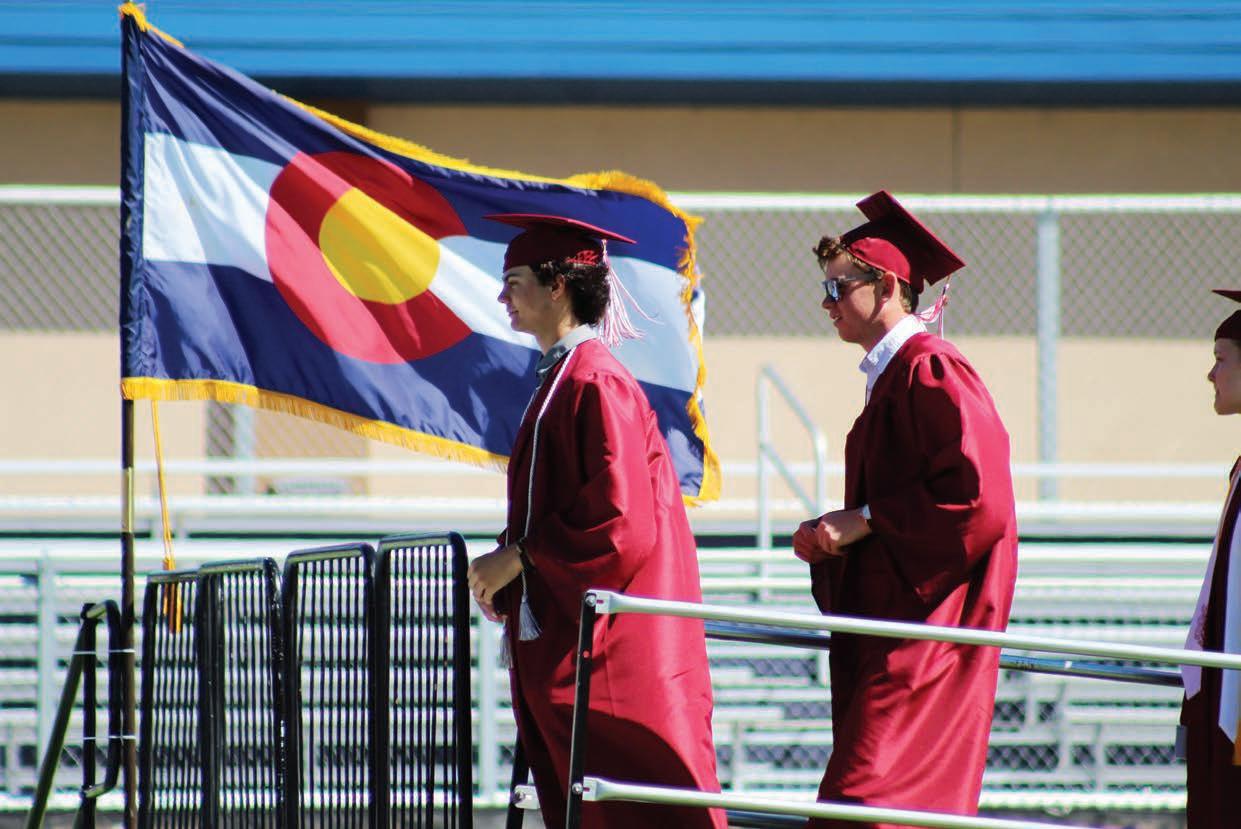


BY MELANIE ASMAR CHALKBEAT
Colorado’s class of 2024 had a higher graduation rate and a lower dropout rate than the previous class — a trajectory that the state education commissioner called “promising progress.”
Statewide, 84.2% of students graduated in 2024 within four years of starting high school, according to data released by the Colorado Department of Education. at’s 1.1 percentage points higher than in 2023 and 3.1 percentage points higher than in 2019, before the pandemic.
e statewide dropout rate fell to 1.9% in 2023-24, from 2.1% in 2022-23. However, the dropout rate remained slightly higher than the state’s historical low of 1.8% in 2019-20.
Students in the class of 2024 were in eighth grade when the pandemic shuttered school buildings in 2020. Most of them missed out on a typical start to high school due to remote learning.
“I am encouraged by the momentum of our state’s multiyear improvements, especially in the gaps that are closing, and we also must do more to keep students engaged in meaningful learning experiences that prepare them for success after graduation,” state Education Commissioner Susana Córdova said in a statement.
e gaps refer to the di erences in graduation and dropout rates based on characteristics such as students’ race, disability status, and whether they are multilingual learners, which means they are learning English as a second language.
In 2024, about 89% of white students
graduated within four years. e fouryear graduation rate for Black students was about 78%, and the rate for Hispanic students was about 77%.
White and Hispanic students posted higher graduation rates in 2024 than in 2023, but the gap between them remained the same. e graduation rate for Black students fell 0.3 percentage points from 78.6% to 78.3%, widening the gap between Black and white students.
e graduation rates of multilingual learners, students with disabilities, students experiencing homelessness, and students in the foster care system improved from 2023 to 2024, though the rates for those student groups remained below the statewide rate.
At a press conference Jan. 22, state education o cials highlighted two school districts — Greeley-Evans and Ignacio — for signi cantly improving their graduation rates. Ignacio’s four-year graduation rate jumped more than 11 percentage points from the previous year to 87.3% in 2024.
Ignacio Superintendent Chris deKay said partnerships, including with the Southern Ute tribe, are important for his small rural district in southwestern Colorado. About a third of Ignacio’s 650 students are Native American, he said.
“When we developed our mission statement, we started with this word: Together,” deKay said.
Greeley-Evans leaders cited a focus on ensuring ninth graders stay on track academically, which puts them on a solid trajectory toward graduation. e district has also increased the number of activities, such as band and theater, that it o ers to keep students engaged,
and boosted its career and technical programs so students can see the real-world value of their education, leaders said.
“Something I often say here in District 6 is that we are educating our children out of poverty,” Greeley-Evans Superintendent Deirdre Pilch said, “and that is what we do when we ensure children are college and career ready and graduate on time.”
State o cials also spotlighted the small metro-area Englewood district for decreasing its dropout rate by 2 percentage points. Englewood leaders credited the work of the district’s alternative school, Colorado’s Finest High School of Choice, which serves students from Englewood and surrounding districts.
Among the 10 Colorado school districts with the highest percentages of students of color and more than 1,000 students, seven posted higher graduation rates in 2024 than in 2023. e Adams 14 district saw the biggest increase, from about 69% of students graduating within four years in 2023 to about 76% in 2024.
Denver Public Schools’ four-year graduation rate grew from 79% to 79.9%.
Graduation rates in the Mapleton, Sheridan, Harrison, Pueblo City 60, and East Otero districts also rose.
Aurora Public Schools, Westminster Public Schools, and Weld Re-8 had lower graduation rates. Aurora’s four-year rate dropped from 74.9% in 2023 to 73.4% in 2024.
Reprinted with permission from Chalkbeat, a nonpro t news site covering educational change in public schools. Sign up for their newsletters at ckbe.at/newsletters.







To provide the most accurate results by geographical area, Colorado Community Media does not require, but does encourage readers to vote for businesses in their immediate local community. All nominated businesses have an equal opportunity of winning, no purchase required. Please see voting website for complete contest rules and regulations.
BY JANE REUTER JREUTER@COLORADOCOMMUNITYMEDIA.COM
Sarah Cooprider was born with an intellectual disability, autism, a severe speech/language disability, and a naturally happy disposition. Her mother noticed during elementary school that Sarah was most happy when she was busy and social.
Annette Cooprider, who lives in Golden with her husband and Sarah, tried several metro area programs for people with special needs. None gave Sarah the level of activity she needed to thrive. en Annette found INSPIRE, a program run through the Evergreen Park & Recreation District.
“My daughter can have behaviors, but she’s an angel when she’s in INSPIRE,” Annette said. “It prevents her from being isolated, which can be common with kids like mine. She gets to go horseback riding, learn archery, play basketball, go bowling and all these things that are available to typical young people. She’s busy and moving. It gives her a much more well-rounded lifestyle.”
Sarah is now 20 years old and a student atJe co Transition Services, a post-secondary program for young adults with special needs, during the school year. While she has limited time to participate in INSPIRE now, her summers are all about the program.
“I get nervous about getting her signed up because it’s so important for both of us — for her to have the experience and for me to have some time,” said Annette, who works full time. “I cherish the time in the summer when she is busy and I know she’s safe.”
INSPIRE stands for incorporating opportunities for social, physical and inclusive recreational experiences for individuals with disabilities. e 31-year-old program was developed and is led by its supervisor, Maren Schreiber, a beloved and well-known member of the Evergreen community.
e program’s weekly events include swimming, bowling and climbing. INSPIRE also partners with other programs for regular skiing and therapeutic horseback riding, and hosts golf, track events, theater outings, Rockies games and a wide range of other physical and social outings.
e program today has 137 participants, who have varying disabilities, from ages 5 to 53. Some of them have been with Schreiber for the entirety of the program.
“You would be surprised how much people with disabilities know and can do,” Schreiber said. “People just don’t really give them a chance. ey are amazing.
“ ey’re de nitely better skiers than me. I would never want to race them.”
Filling a need
In 1995, Schreiber was working as an Evergreen Park
and Recreation Department (EPRD) swim coach and personal trainer when the mother of a young boy with Down syndrome approached her.
“She said there’s nothing for people with disabilities up here,” Schreiber said. “My boss at the time was you can try (creating a program), but she wasn’t sure if we had enough people. en people came from Stapleton, Morrison, Bailey, Pine, all over.”
Today’s participants come from throughout the metro area, including Aurora, Arvada, Lakewood, Littleton and Golden. One former participant who now lives in Illinois returns regularly to go on INSPIRE outings.
“ ey make the trip because of how special it is and the connections they make,” EPRD Executive Director Cory Vander Veen said. “It changes their world.”
INSPIRE is funded partly through EPRD and supplemented by the New Year’s Day Evergreen Lake Plunge, the Evergreen Ice Melt contest and other fundraisers and individual donations.
e bene ts for Schreiber, her sta and volunteers, the participants and their families are priceless.
For Evergreen physician Todd Wisser and his physician wife, Kate, INSPIRE has been a gift for the family. Fifteen-year-old Cambria has cerebral palsy, autism and epilepsy, and had previously been in special needs programs in Michigan. When the family moved to Evergreen in 2017, they were astounded to discover INSPIRE.
“We didn’t know the high level of service we’d be getting here,” Todd said. “INSPIRE’s service to the special needs population is unsurpassed. ey have been immensely wonderful and supportive and thorough, just o ering tons of opportunity.
“Cambria’s done whitewater rafting, ziplining, skiing, gold mine tours, the Georgetown Loop railroad. It’s a profound, wonderful connection she has with that group.”
INSPIRE and Schreiber also provide needed respite for the family, which includes two other children.
“Cambria can be a challenge at times with those diagnoses,” Wisser said. “She can be emotional. And she’s




a teenager. So that brings with it a lot of e ort and energy that needs to go into her. Having the opportunities for respite that Maren and her team provide has been amazing. Not only is it valuable for Cambria, it’s hugely valuable for our other two children, and my wife and I.” Further extending the bene ts, Wisser’s other two children have volunteered with INSPIRE.
Lakewood resident Lisa Arnold’s now 24-year-old daughter, Grace, who has Down syndrome, discovered the program 16 years ago. It’s been part of their lives since.
“Services vary between states, and we had moved from Ohio,” Lisa said. “It was really terri c to move to a small community and nd this absolutely amazing program that has such a variety. We’ve moved down the hill since, and we drive back for INSPIRE.”
Grace recently graduated from college with a science certi cate and is applying for a job with the Denver Zoo, but INSPIRE remains part of their lives.
“All these kids grew up together,” Lisa said. “And I’ve made some really great connections with other families. e disability world is kind of its own thing with Medicaid and all the processes and procedures. It’s nice to talk with other people that have some tips, and we’ve been able to share in our kids’ frustrations and successes.”
Rebecca Sobolevsky, a single parent who lives in Aurora, was desperate to nd a program for her now 20-year-old son, Ethan, when they moved from Chicago to Colorado in 2017.
“He’s tried a few other programs; Evergreen is always his favorite,” she said. “Some programs, it feels like it’s just a job for the sta . But the INSPIRE sta are super respectful, positive and fun. And I know they enjoy him, too. We drive some distance to get there, but it’s worth it.”
Communitywide benefits INSPIRE and similar programs have improved the quality of life for participants.
And positive e ects of programs like INSPIRE radiate far beyond those who are directly impacted. Spending time or just being around people with disabilities helps others, giving them a fresh perspective on life and a sense of compassion and appreciation for others, according to information compiled by ALSO, an Oregon nonpro t that advocates for people with disabilities.
“I very rarely see kids like mine in the community,”

Annette Cooprider said. “I think that can be isolating for families.
“For those people who are not part of this community, I think INSPIRE helps them to see these people are capable. ey are able to ride horses, zipline, climb a climbing wall, and all of those things.”
Community inclusion of people with disabilities evenimproves the economy. Research published by Nature.com shows employees with disabilities have high employer loyalty and motivation to work, and they remain at their jobs much longer than the general population with higher levels of job satisfaction.
INSPIRE’s participants are proof of what people with disabilities can accomplish.
“I have one young man who has autism who’s since graduated from Rutgers and is a lawyer,” Schreiber said.




“I have four girls who’ve gone on to college, one with Down syndrome. We have people who work at King Soopers. We have the whole gamut.”
Keeping the program nancially a oat is an ongoing challenge, Schreiber said. e average cost for each disabled person to participate is $20,000 a year, and the adaptive equipment required for some activities is expensive. It’s the only EPRD program that hosts fundraisers to o set its costs.
Finding funding is a necessary part of the job, but it’s not Schreiber’s overriding concern. What she cares about most are the individuals INSPIRE serves and the experiences it provides them.
“ ey get to have a quality of life doing all these different activities,” she said. “I always like to nd the next craziest thing to do. I’m all about pushing the envelope.”






Transit agency will now investigate all crime occurring on its property
BY MONTE WHALEY MWHALEY@COLORADOCOMMUNITYMEDIA.COM
e Regional Transportation District will now investigate all crime that happens on the agency’s property, through a newly created and fully functioning detective bureau. e in-house detective bureau will enable RTD to directly perform investigations on thefts and any other criminal activity that may occur on its property – “anything that a ects the ability of our customers to ride the system safely,” said Brian Cousineau, the agency’s RTD-PD Commander, who will lead the detective bureau. “We want people to utilize our services and feel safe doing so.”
Cousineau said in a news release that the new bureau will help RTD pursue prosecuting personal crimes, involving any threat or use of force, and includes felony-level narcotics violations across the agency’s system or property.
As the bureau works out protocols for working with the eight counties in the agency’s district, the department will be able to le its own cases and carry out investigations on related cases that occur in di erent municipalities. As an example, Cousineau pointed to last year’s copper wire thefts from RTD tracks.
“If a copper wire theft happens in Aurora on our property and the wire was valued at $900, that’s a misdemeanor crime; we would hand it over to the Aurora Police



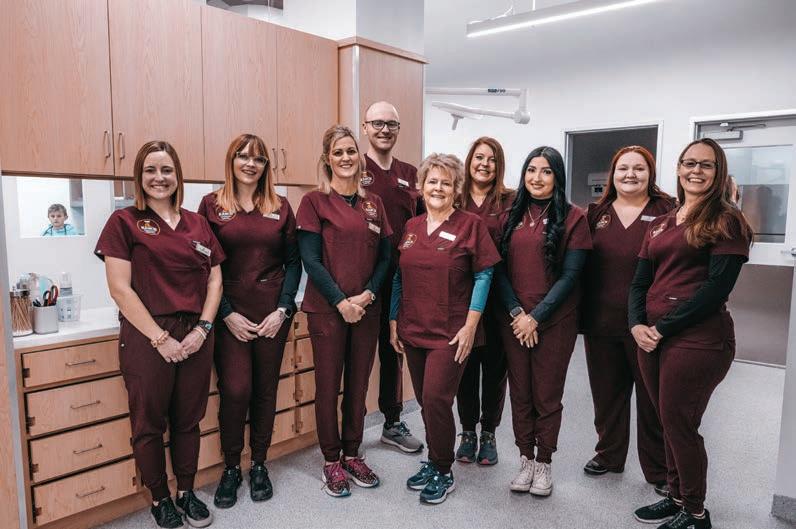







Locally owned and operated by Dr. Leslie Longo, The Ranch Veterinary Hospital is a brand new state-of-the-art veterinary hospital opening in Highlands Ranch. Sign up for the latest updates and receive exclusive o ers and access to our opening events.

Department,” Cousineau said. “Let’s say the same $900 copper wire theft happened a week later in ornton, and then a week later at Lakewood. e bene t of having our own detective bureau is that we can assign our detectives to all those cases. is changes the crime from being a misdemeanor to a felony-level crime.”
e RTD-PD had aimed to establish a fully functioning detective bureau to le criminal cases in jurisdictions throughout its service area prior to the copper wire thefts in 2024. e thefts “were de nitely a catalyst for us to get the bureau established more quickly,” Cousineau said.
Cousineau anticipates the RTD-PD detective bureau will be fully operational by the end of the second quarter in 2025, according to the news release.
“One of the biggest lifts that we have is to get with all eight counties to le cases to each of their expectations. is will also include establishing secure systems for eling and setting up protocols for writing probable cause a davits.”
On Jan. 6, the RTD-PD internally promoted Transit Police o cers Fabian Rodriguez to detective lieutenant and Brian Beary to detective on its force, according to the news release.
Rodriguez has served as an o cer for 27 years, with most of his career at the Adams County Sherri ’s O ce where he supervised general investigations and the North Metro Drug Task Force.
Rodriguez’s career includes working with federal organizations such as the Federal Bureau of Investigations, Homeland Security Investigations and the Drug Enforcement Agency. Beary has served in law enforcement for 18 years. Prior to joining RTD-PD, he was a criminal investigator for the Colorado Department of Revenue for six years, the news release states.
A third detective, Craig Tangeman, joined the force on Jan. 21. Tangeman has worked
in law enforcement for over 26 years, with 19 years dedicated to investigative operations for Arapahoe County Sheri ’s O ce. He has conducted federal and state investigations and managed over 200 police o cers, federal agents, and volunteers as part of proactive investigative operations, the news release states. Tangeman is experienced in conducting major case investigations having been assigned to the Metro Gang Task Force, the Safe Streets Fugitive Unit, and the Child Exploitation and Human Tra cking Task Force.
Cousineau who has worked for RTD-PD for almost two years, according to RTD. In Cousineau’s 28 years working in law enforcement, 14 have been dedicated to supervisory and investigative functions, including working on narcotics task forces, supervising detectives, and overseeing investigations ranging from high-level misdemeanors to homicide crimes and internal a airs.
e agency is budgeted to add two more detectives to the department later in 2025, RTD says. e RTD-PD is also in the process of developing an evidence room to follow the proper chain of custody to hold evidence needed to prosecute cases. Once established, this will mitigate reliance on other police agencies to retain evidence needed to prosecute criminal activity that occurred on RTD property.
e agency states in the news release that RTD-PD have taken deliberate strides to grow the force to better support community and employee safety as part of the agency’s “Welcoming Transit Environment” strategic initiative.
e RTD-PD force stands at approximately 90 o cers today and began the year with recruits in the police academy. e agency is budgeted for 150 sworn o cers in 2025 –a signi cant growth from when the department had 19 o cers on the force in August 2019, the news release states.



Thu 2/20
Forty Feet Tall
@ 7pm
Hi-Dive, 7 S Broadway, Denver
The Warrior Poet
@ 8pm
Oskar Blues Grill & Brew, 1624 Market St, Den‐ver
Zoe Stroupe
@ 8pm
Lost Lake Lounge, 3602 E Colfax Ave, Denver
Duncan Coker: The Black Buzzard
@ 8pm
The Black Buzzard, 1624 Market St, Denver
PhaseOne: Sounds Of Mayhem
Takeover
@ 10pm
The Church Nightclub, 1160 Lincoln St, Denver
Fri 2/21

Rodney Carrington
@ 7pm
Sat 2/22

Caffeine and Chrome – Classic Cars and Coffee at Gateway Classic Cars of Denver @ 9am
Gateway Classic Cars of Denver, 14150 Grasslands Drive, Englewood. market ing@gatewayclassiccars.com, 618271-3000

Escape the Fate - 16+ @ 7pm Bluebird Theatre, Denver
The Takes @ 7pm
Larimer Lounge, 2721 Larimer St, Denver
Mon 2/24
Beyond Laser Light Experience @ 12pm Denver
Modern Swing Mondays 2025 @ 6:30pm / $16.51 Stampede, Aurora
DJ Rockstar Aaron @ 7pm
The Angry Clover, 15350 E Smoky Hill Rd, Au‐rora Knolls

Christopher Morse: Nashville Night @ 7pm

The Playmakers @ 12pm Dazzle Denver, 1080 14th Street, Denver
the Buzz @ 8pm
Oskar Blues Grill & Brew, 1624 Market St, Den‐ver
Sunstoney @ 9pm Hi-Dive, 7 S Broadway, Denver
Machinedrum @ 10pm Club Vinyl, 1082 N Broadway, Denver
Paramount Theatre, Denver
Ren Q. Dawe: Knotty Show
@ 7:30pm
Studio Friction, 740 Lipan St, Denver

Ryan Chrys & The Rough Cuts: Johnny Cash Birthday Bash
@ 8pm
The Owl Saloon, 5026 E Colfax Ave, Denver

Last Ditch
@ 8pm HQ, 60 S Broadway, Denver
Party Iconic
@ 8pm Marquis Theater, 2009 Larimer St, Denver
Lost Kings
@ 10pm
Temple Denver, 1136 Broadway, Denver
Sun 2/23
Adam Bodine @ 12:30pm Dazzle Denver, 1080 14th Street, Denver

Tue 2/25
Psyclon Nine @ 7pm HQ, 60 S Broadway, Denver
Escuela Grind: Dreams On America Tour @ 7pm Marquis, Denver

Opera Colorado - La Boheme @ 7:30pm

The Highlands Ranch Concert Band presents: Sound Tracks @ 3pm Aspen Academy, 5859 South University Boulevard, Greenwood Village. media@ hrconcertband.org, 303-870-3662

The Broken View @ 6pm HQ, 60 S Broadway, Denver

Ellie Caulkins Opera House, Speer Boulevard and Arapahoe Street, Den‐ver
Daniel Villarreal: Dazzle Denver @ 8pm Dazzle Denver, 1080 14th Street, Denver
Wed 2/26
Ladies Night @ 6pm / $16.51 Stampede, Aurora
IPECAC @ 7pm
Marquis Theater, 2009 Larimer St, Denver

Hinder (16 & Over)
@ 7:30pm Gothic Theatre, Englewood


Studio@Mainstreet, 19604 Mainstreet, Parker
Marco Luka @ 8pm Globe Hall, 4483 Logan St, Denver
DJ Rockstar Aaron @ 8pm
Bout Time Pub & Grub, 3580 S Platte River Dr A, Sheridan
Thu 2/27
Beyond Laser Light Experience @ 4pm Denver

Origami Summer Album release @ 7pm
Hi-Dive, 7 S Broadway, Denver

Alexa Wildish: Jayme Stone's Folklife @ 7pm
Savoy Denver, 2700 Arapahoe St, Denver
Fox N’ Vead supporting Gavin Adcock @ 7pm
Fillmore Auditorium, 1510 Clarkson St, Denver
Opera Colorado - La Boheme @ 7:30pm
Ellie Caulkins Opera House, Speer Boulevard and Arapahoe Street, Denver
Liz Longley @ 8pm
Swallow Hill, 71 E Yale Ave, Denver

BY JOHN RENFROW JRENFROW@COLORADOCOMMUNITYMEDIA.COM
For students interested in sports management, marketing or just getting their foot in the door of the sports industry, a local author might have the blueprint for you.
Brandon Tosti, who lives with his family in Arvada, is an industry veteran and longtime sports business professional. His new book, “Bright Lights & Long Nights,” provides behind-the-scenes insights into how the sausage is made in the world of sports.
Many don’t want to give up sports when their playing days are done, and Tosti said this book could help them break through into the business side.
“ is is the book I wish I’d had when I was 22,” Tosti said, who has nearly two decades of experience in the sports industry. “ rough this book, I aim to help the next generation of sports management (and marketing) students understand how to break into the sports industry. I also wanted to show diehard fans how everything works with a unique and authentic behind-the-scenes view.”
Tosti has taught sports management and
marketing at Johnson & Wales University in Providence, Rhode Island, and the University of Colorado-Denver. He also spent eight years in the concert business.
He is originally from Paintsville, Kentucky, and attended the University of Kentucky where he received his master’s degree in sports management.
He’s been in Colorado since 2000 and has been involved in sports and sponsorships since, including managing the opening of Dick’s Sporting Goods Park in Commerce City.
Tosti is now the director of sponsor relations for Outside Inc. in Boulder, and the founder and executive director of the Denver-based nonpro t Sports for a Cause.
“My book is unique and focuses on the sports industry, not an individual athlete or famous coach,” he said. “ e front o ce is lled with dedicated, hard-working individuals that no one hears about, and I want sports fans to understand the work it takes to make game days happen.”
Search for “Bright Lights & Long Nights” on Amazon, and for more on Tosti, visit www. brandontostiauthor.com.


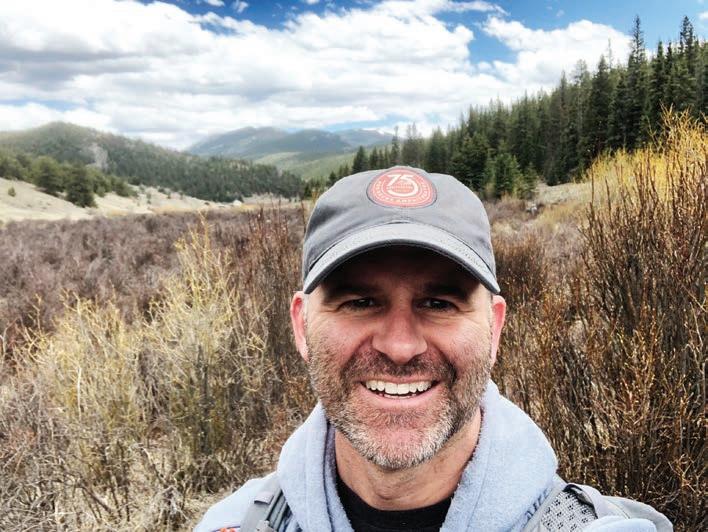

Colorado Symphony Scores The Infinity Saga at Boettcher Marvel Studios’ execution of The Infinity Saga is one of the crowning cinematic achievements of this century, and the music for each film and character add to the unifying experience of seeing everyone join together at the story’s end. The Colorado Symphony is hosting a celebration of the music and films with its Infinity Saga Concert Experience
Conducted by Christopher Dragon and held at 7:30 p.m. on Saturday, Feb. 15 and at 2:30 p.m. on Sunday, Feb. 16 at Boettcher Concert Hall , 1000 14th St. in Denver, the concert covers 23 films in one massive experience, with scenes

Year of the Snake with its 2025 Lunar New Year Celebration
Highlands Ranch Community Association is looking to spring, and has a couple upcoming seasonal events.
Flower Sale
e HRCA’s ower sale is happening now. Order deadline is Feb. 14. Both baskets and pots are planted with numerous attractive plants and color


from the films shown on screens. It’s an opportunity to catch up with some of your favorite super heroes and recreate that same rush you had in the theater.


Assemble your tickets at www.coloradosymphony.org.
Held at the PACE Center , 20000 Pikes Peak Ave., from 10 a.m. to 2:30 p.m. on Saturday, Feb. 15, the event will feature culturally-rich performances and activities, all designed to provide enjoyment and understanding. Attendees can sample mini classes, live entertainment and much more.

Clarke Reader
Parker Welcomes the Year of the Snake
The Town of Parker is joining with numerous organizations, including the Dragon Boat Festival, Denver Chinese School and Douglas County School District, to celebrate the
Information and reservations are available at https://parkerarts.org/ event/lunar-new-year/.
Clarke’s Concert of the Week — David Gray at the Buell Theatre
The music made by British singer/ songwriter David Gray is perfect for
combinations. Choose from 12-inch hanging baskets, 12-inch Geranium Vintage Planters, 11-inch and 15-inch patio pots. e 12-inch “vintage” pots contain geraniums with a spike in the middle and trailing vinca vine.
Pick up takes place from 10 a.m. to noon on May 3 at the Westridge Recreation Center.
Proceeds support HRCA’s erapeutic


Recreation Program for people with disabilities.
Spring Bazaar
e HRCA’s Spring Bazaar takes place from 9 a.m. to 5 p.m. on March 1 at the Eastridge Recreation Center, 9568 University Blvd.
More than 100 vendors will display and sell unique and high-quality products. is one-of-a-kind marketplace will in-
this mid-to-late winter time we find ourselves mired in. His blend of acoustic songwriting and electronica touches create just the right kind of tunes to wrap yourself in. His latest album, “Dear Life,” continues his streak of enchanting and experimental releases. In support of the album, Gray will be performing at the Buell Theatre , 1350 Curtis St. in Denver, at 8 p.m. on Tuesday, Feb. 18. It’s the perfect meeting of artist and venue, as I’m certain his lovely music will sound great in the theater. Get tickets at www.axs.com.
Clarke Reader is an arts and culture columnist. He can be reached at Clarke. Reader@hotmail.com.
clude photography, original art, sculpture ceramics, specialty food, precious jewelry and gems and more.
Admission is free and open to the public.
Vendor applications are open until Feb. 28. For more vendor information, contact Katherine Rhodes at katherine.rhodes@ hrcaonline.org.























country,” she said at the event. “ is is the reality for many of us, that we are told again and again that we don’t belong when we are making our nation better, when we are working in Colorado to make everyone’s lives better.”
We are not just a workforce; we are people who are trying to do the “right thing.” Perhaps people can say, “You are trying to do the right thing through the wrong way,” but that’s not true. Even if you try to do everything the right way, it’s not possible for everyone, because the system presented to us is not for us, sometimes.
I recently attended a community information session where people came seeking answers for their immigration cases and status adjustment cases. At the end of the day, as someone who has been there and done that, I saw people simply asking, “How can I have a better life, without hurting anyone, without bothering anyone? A life where I can work, study and live in peace without being afraid?”
While it may feel like the future is bleak and that this feeling of dread will never leave until we get an answer to those questions, I have hope, thanks to the protests that have happened and are still going.
“May they not fall on the de-



COURTESY OF JACKIE RAMIREZ
scent nor on the ascent of the path, may they nd no obstacles behind or ahead of them. Nor anything that strikes them. Grant them good roads, beautiful plain roads.”
I saw this quote from the Mayan text Popol Vuh at the National Museum of Anthropology in Mexico City. It’s a poetic but powerful way to describe the hope that perhaps things can change.
Perhaps we can nd some answers, but until then, I hope that one day we can eventually come across beautiful plain roads, and that we don’t lose hope amid the uncertain roads ahead.
Jackie Ramirez is editor of the bilingual newsletter La Ciudad.






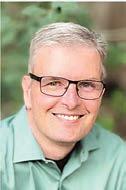
little more than 16 years ago, I faced an interesting situation at work. e most outgoing and social member of our leadership group was taking a di erent job and leaving. is meant there was no one on the team who was comfortable striking up conversations with total strangers and building relationships with those unknown members of the school population. It was obvious to me that the team needed someone who could be that outgoing extrovert.
I am not sure why, but I decided I should become that outgoing person the team needed. So, this reserved, quiet with strangers, most comfortable with family, pseudo introvert decided that he was going to become an expert at interacting with strangers.
I decided that I would call my experiment “100 days of Smiles” in a nod to my youth when AM radio stations like KIMN would mark summer with “100 days” promotions. I determined that over those weeks, I would go out of my way each day to talk for even a few minutes with someone I did not know. It would




mean taking chances that were uncomfortable. I simply was not the kind of person who would out of the blue say something to a total stranger. But I stepped into it and started intentionally nding new people to talk with each day.
e rst two weeks were painful. I often felt awkward and ill-equipped for such an undertaking. But I plodded on. It got easier as the weeks progressed, and then one day, near the end of my experiment, my wife, Beth, and I were on a walk around our neighborhood. Because it was close to Halloween, there was a family out decorating their front yard. I stopped walking and struck up a conversation with the parents as they worked on the decorations. I told them how much I appreciated seeing their tombstones each year and talked about the decorations that I liked most. We stood there talking for three or four minutes, said goodbye, and continued walking down the street.
We had gone maybe 10 steps when Beth, still looking straightforward, said quietly but loud enough for me to hear, “Who the hell are you and what have you done with my husband?”
I had done it! In 100 days, I had moved from a person who struggled to strike up conversations with strangers to someone who quite enjoyed acknowledging other people and engaging in conversation.



Since that day, when I struggle with something related to my MS, I think about those “100 days of Smiles” and remember that we have within us the ability to shape ourselves, to remake our perspectives, to change our path. Struggles are not fun, but when we understand our transformative personal ability, we unlock so much. is week I hope you will take some time to consider your own initiative, your “100 days of whatever it is you need to reshape.” You can do it; I did. Take the step and commit to the 100 days. Make a di erence for yourself and those around you. You’ve got this, I would love to hear about your “100 days” goal. I truly appreciate hearing about the ideas you nd valuable in these columns and how you use them to uplift those around you. ank you to everyone who has shared their stories with me so far. you can reach me at jim.roome@gmail.com.
Jim Roome lives in Arvada with his wife Beth. He spent 34 years in public education. Lessons learned from the one two punch of being diagnosed with MS shortly before his best friend was diagnosed with terminal cancer led him into a new pursuit as a freelance writer and speaker. He uses his life experiences and love of stories to inspire, educate and encourage local, national and international audiences.









1. GEOGRAPHY: What is the highest mountain in Canada?
2. TELEVISION: Who is the host of the long-running reality series “Survivor”?
3. LITERATURE: Which animals represent the Communist Party in “Animal Farm”?
4. U.S. STATES: Which state is the birthplace of the singer Elvis?
5. ASTRONOMY: How long does it take the moon to orbit the Earth?
6. MOVIES: What is the score Elle receives on her law school admission test in “Legally Blonde”?
7. AD SLOGANS: Which product’s slogan is “Is It In You?”?
8. LANGUAGE: What is an eraser called in the United Kingdom?
9. SCIENCE: What are the four primary precious metals?



10. GENERAL KNOWLEDGE: Valentine’s Day arose from which Roman ritual?
Answers
1. Mount Logan.
2. Je Probst.
3. Pigs.
4. Mississippi.
5. 27.3 days.
6. 179.
7. Gatorade.
8. A rubber.
9. Gold, silver, platinum and palladium.
10. Lupercalia.
(c) 2025 King Features Synd., Inc.

Taken privately by mail
GIVE GOD A TRY
Kerry and Patty Franklin 9249 Broadway #200-544, Highlands Ranch, 80129
Castle Rock Church of Christ
We pay all postage.
WIDOWED MEN AND WOMEN OF AMERICA. A social club offering many exciting activities and life long friendships. Social hours for all areas of Metro Denver. Visit Widowedamerica.org for details In your area!

Split & Delivered $450 a cord Stacking $50 Call 303-647-2475 or 720-323-2173 Health & Beauty
STRUGGLING TO HEAR?
Audien Hearing delivers crystalclear sound with affordable, invisible hearing aids. Starting at $189! Call Now: 888-760-1015
Dental insurance from Physicians Mutual Insurance Company. Coverage for 400+ procedures. Real dental insurance - not just a discount plan. Get your free Information Kit with details! 1-855-526-1060 www.dental50plus.com/ads #6258
Attention oxygen therapy users! Discover oxygen therapy that moves with you with Inogen Portable Oxygen Concentrators. Free information kit. 1-866-4779045
Home break-ins take less than 60 seconds. Don’t wait! Protect your family, your home, your assets now for as little as 70¢/ day! 1-844-591-7951
Consumer Cellular - same reliable, nationwide coverage as the largest carriers. No longterm contract, no hidden fees free activation. All plans feature unlimited talk & text, starting at just $20/mo. Call 1-877-751-0866

Water damage cleanup & restoration: A small amount of water can lead to major damage in your home. Our trusted professionals do complete repairs to protect your family and your home’s value!
Call 24/7: 1-888-872-2809. Have zip code of service location ready when you call!
Prepare for power outages today with a Generac Home Standby Generator. Act now to receive a FREE 5-Year warranty with qualifying purchase* Call 1-855948-6176 today to schedule a free quote. It’s not just a generator. It’s a power move.
DIRECTV Stream - Carries the most local MLB Games! Choice Package $89.99/mo for 12 mos Stream on 20 devices at once. HBO Max included for 3 mos (w/ Choice Package or higher.) No contract or hidden fees! Some restrictions apply. Call IVS 1-866859-0405
MobileHelp America’s premier mobile medical alert system. Whether you’re home or away. For safety & peace of mind. No long term contracts! Free brochure! Call 1-888-489-3936
Don’t let the stairs limit your mobility! Discover the ideal solution for anyone who struggles on the stairs, is concerned about a fall or wants to regain access to their entire home. Call AmeriGlide today! 1-833-3993595
!!OLD GUITARS WANTED!! GIBSON, FENDER, MARTIN, Etc. 1930’s to 1980’s. TOP DOLLAR PAID. CALL TOLL FREE 1-866-433-8277
AGING ROOF? NEW HOMEOWNER? STORM DAMAGE? You need a local expert provider that proudly stands behind their work. Fast, free estimate. Financing available. Call 1-888-878-9091 Have zip code of property ready when calling!
Jacuzzi Bath Remodel can install a new, custom bath or shower in as little as one day. For a limited time, waving ALL installation costs! (Additional terms apply. Subject to change and vary by dealer. Offer ends 3/30/25.) Call 1-844-501-3208

Doodle Puppies Golden Doodles and Bernedoodles Home-Raised Heath Tested and Guaranteed Standard and Mini Size available Schedule a visit today! (970)215-6860 www.puppylovedoodles.com
Trade 1989 Corvette and 99 Jeep Grand Cherokee (both engines are shot) for a quality car that passes emissions. Call 720-979-2929.

Teacher of the Deaf and Hard of Hearing
East Central BOCES is seeking a Part-Time 3.5 days a week
Teacher of the Deaf and Hard of Hearing for the remainder of the 2024-2025 school year, approximately 53 days, depending on start date. Salary Range$13,754 - $18,122, dependent upon experience and education.
Requirements: Hold or be able to attain a Colorado Teaching License with an endorsement as a Special Education SpecialistDeaf/Hard of Hearing required. Complete assessments, attend IEP meetings, provide direct and indirect special education services.
Benefits: Excellent benefits including access to a company vehicle or mileage reimbursement and fully paid health insurance, including vision and dental. May be eligible for loan forgiveness program. Flexible scheduling with the opportunity to complete some work from home. To apply for this position, please visit our website ecboces.org and click on the “Jobs” page, click on the job you are interested in & then click on the grey button “Apply Online”, located at the bottom of the job listing. Questions contact Tracy at (719) 775-2342, ext. 101. EOE
Facilitator/Aide
East Central BOCES is seeking a facilitator/aide to assist with the provision of special education services to students. Travel is required to multiple schools. Duties include picking up students from class, monitoring students during virtual instruction, and returning them to class. Training will be provided. Great Opportunity for someone who wants to work while your children are in school or someone who is taking online college classes. The salary range is $16 - $18 per hour, depending on experience. 24 hours per week. Mileage reimbursed for travel between schools. Location of schools: Arickaree, Bennett, Limon, Burlington, Deer Trail, Kiowa, Kit Carson, Strasburg, & Byers. Questions, please contact Tracy at 719-775-2342 ext. 101 or tracyg@ecboces.org. To apply for this position, please visit our website ecboces.org and click on the “Jobs” page, click on the job you are interested in & then click on the green button “Apply Online”, located at the bottom of the job listing. EOE
Registered Occupational Therapist
In-Person Full-Time Registered Occupational Therapist for 2025-26 School Year
• OTR must have, or be eligible for appropriate Colorado licensure
• Work with Pre-12th grade students completing assessments,attending IEP meetings and providing direct & indirect services.
• Full Time Salary range: MA $53,615 - $59,215 PhD $58,465 -$64,465 for 186 days.
• Fully paid insurance including medical, dental and vision.
• Access to a company vehicle or mileage reimbursement.
• May be eligible for a loan forgiveness program!
• Flexible scheduling with the opportunity to complete some work from home.
• To apply for this position, please visit our website ecboces.org and click on the “Jobs” page, click on the job you are interested in & then click on the grey button “Apply Online”, located at the bottom of the job listing. EOE
• Questions contact Tracy at (719) 775-2342, ext. 101. EOE




























































































































































